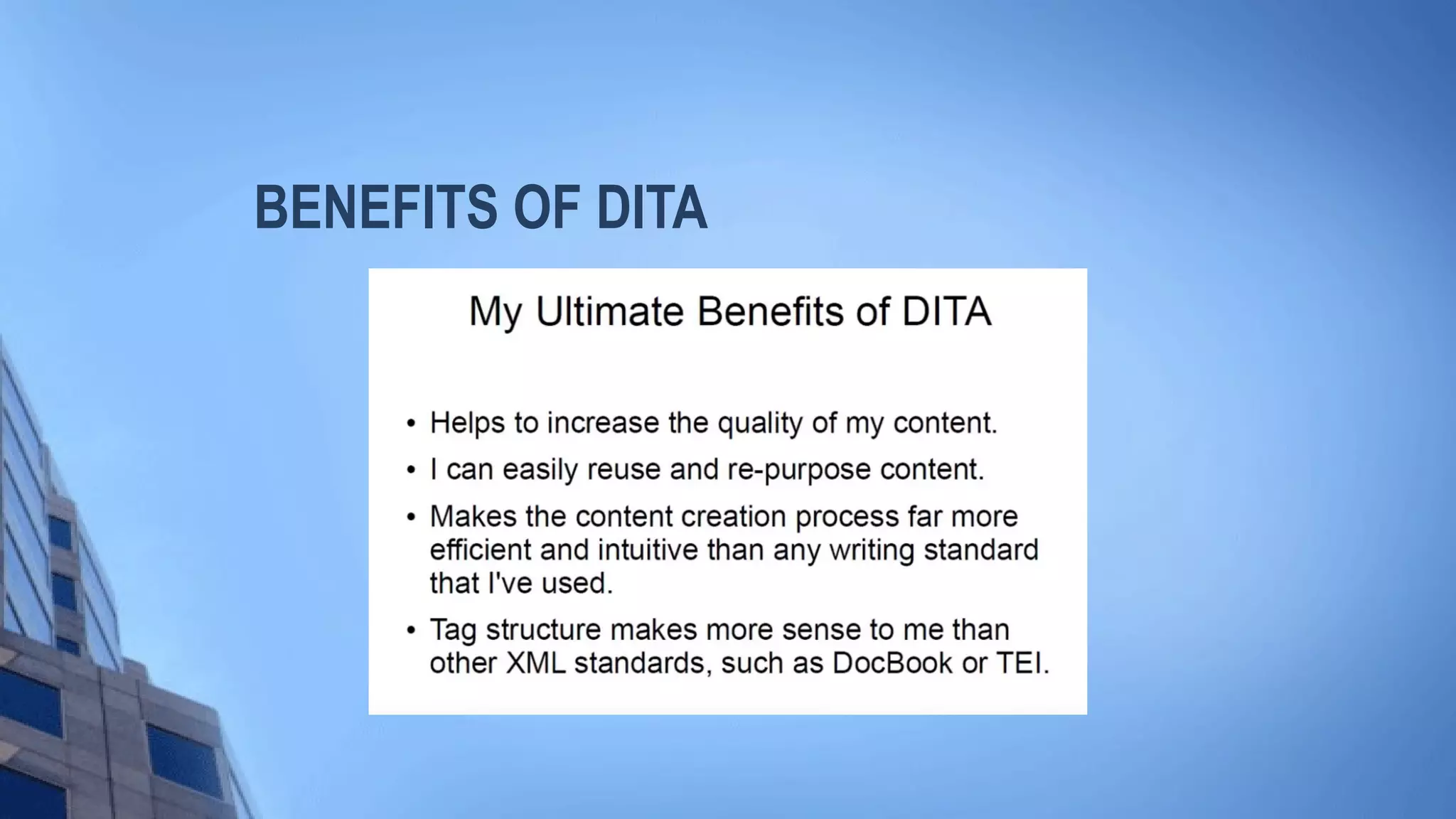Unstructured authoring refers to writing content with traditional word processors like Microsoft Word, while structured authoring uses XML. Content authored with XML is inherently structured, describing its meaning and relationships. Organizations are adopting structured authoring using XML because it enables streamlining content processes and facilitating content automation. DITA is an open standard for authoring and publishing structured technical content using XML. DITA supports single-sourcing content to produce multiple outputs and maximizes reuse through topics, conditional text, and other features.

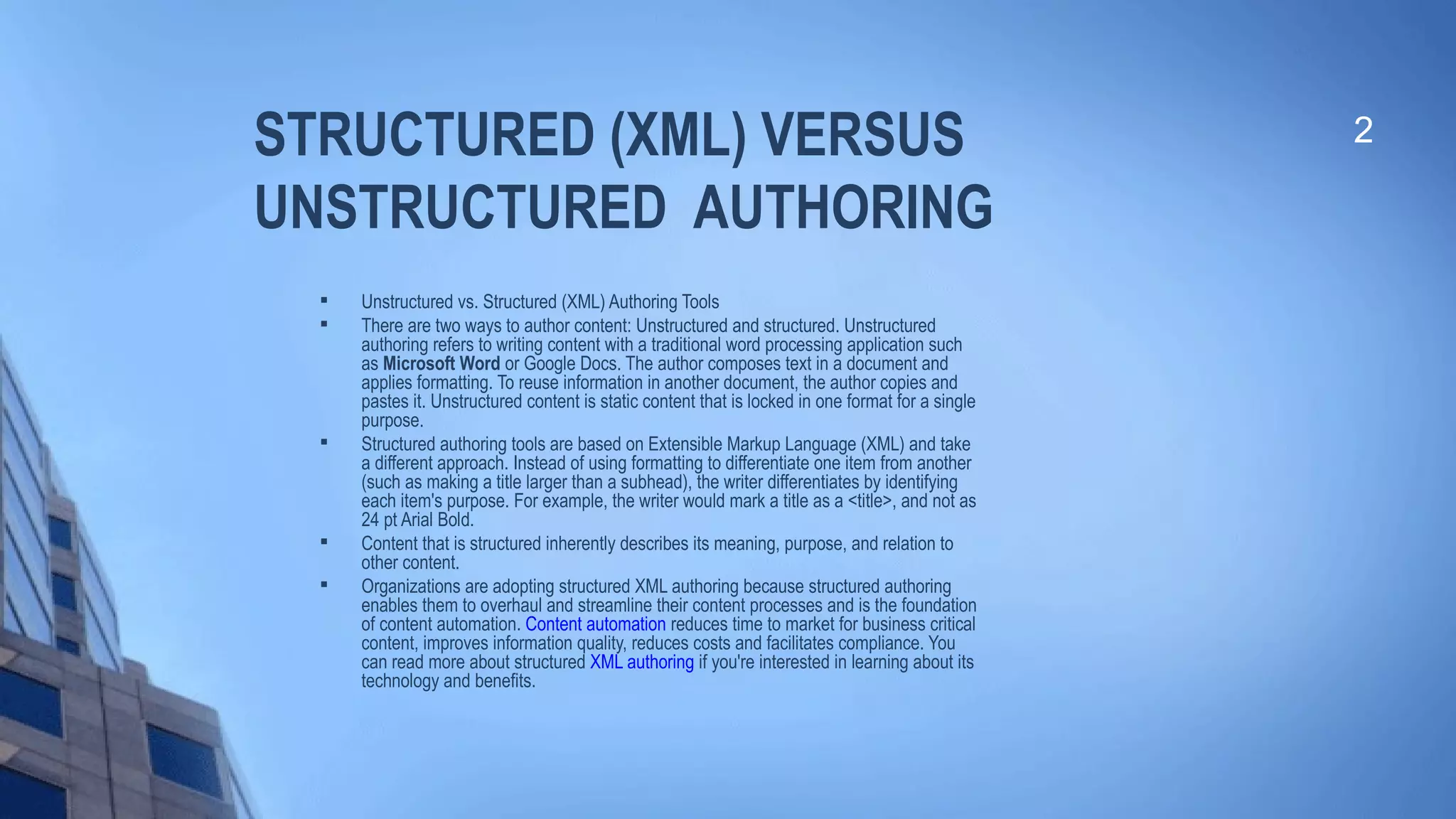

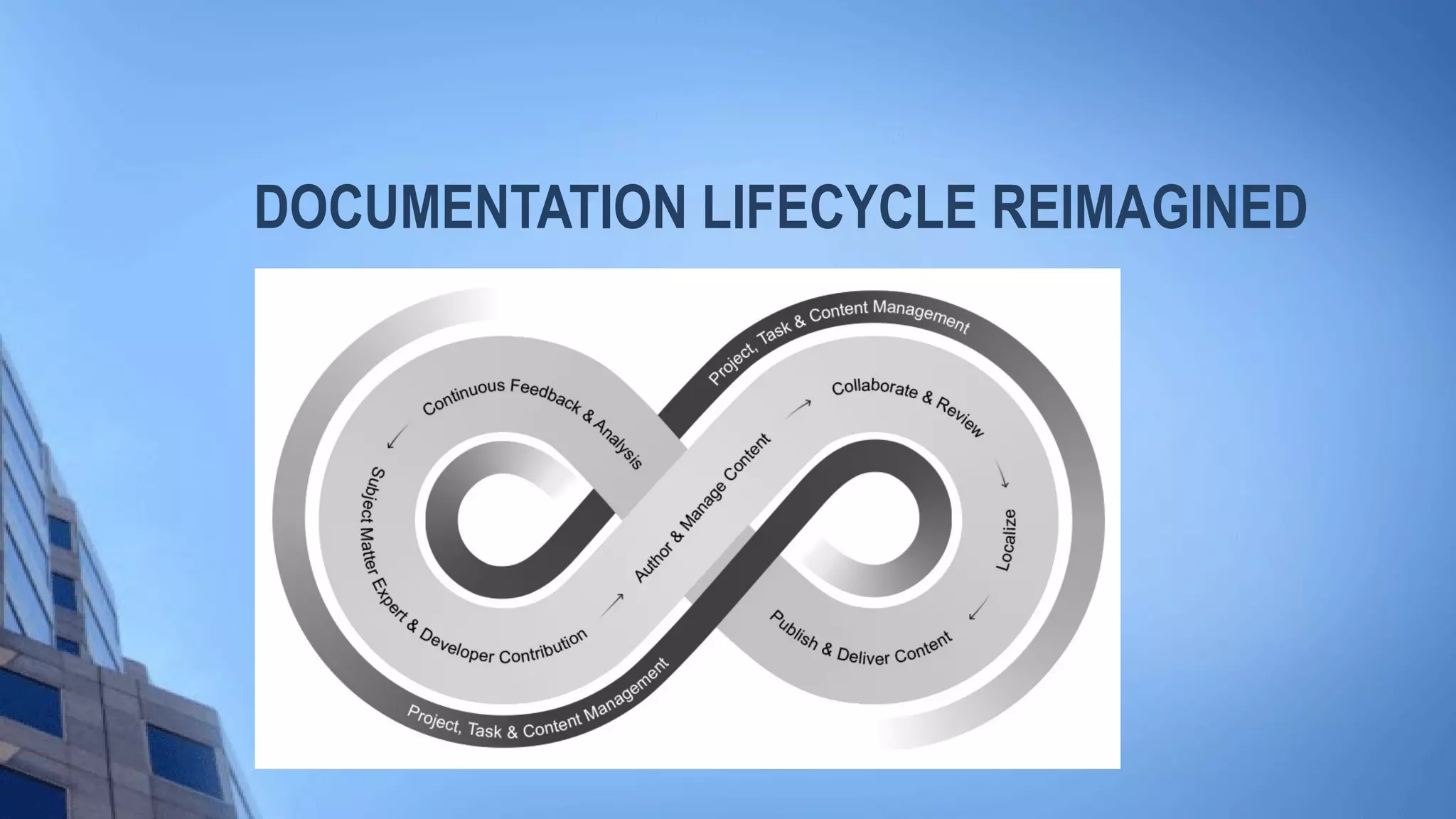
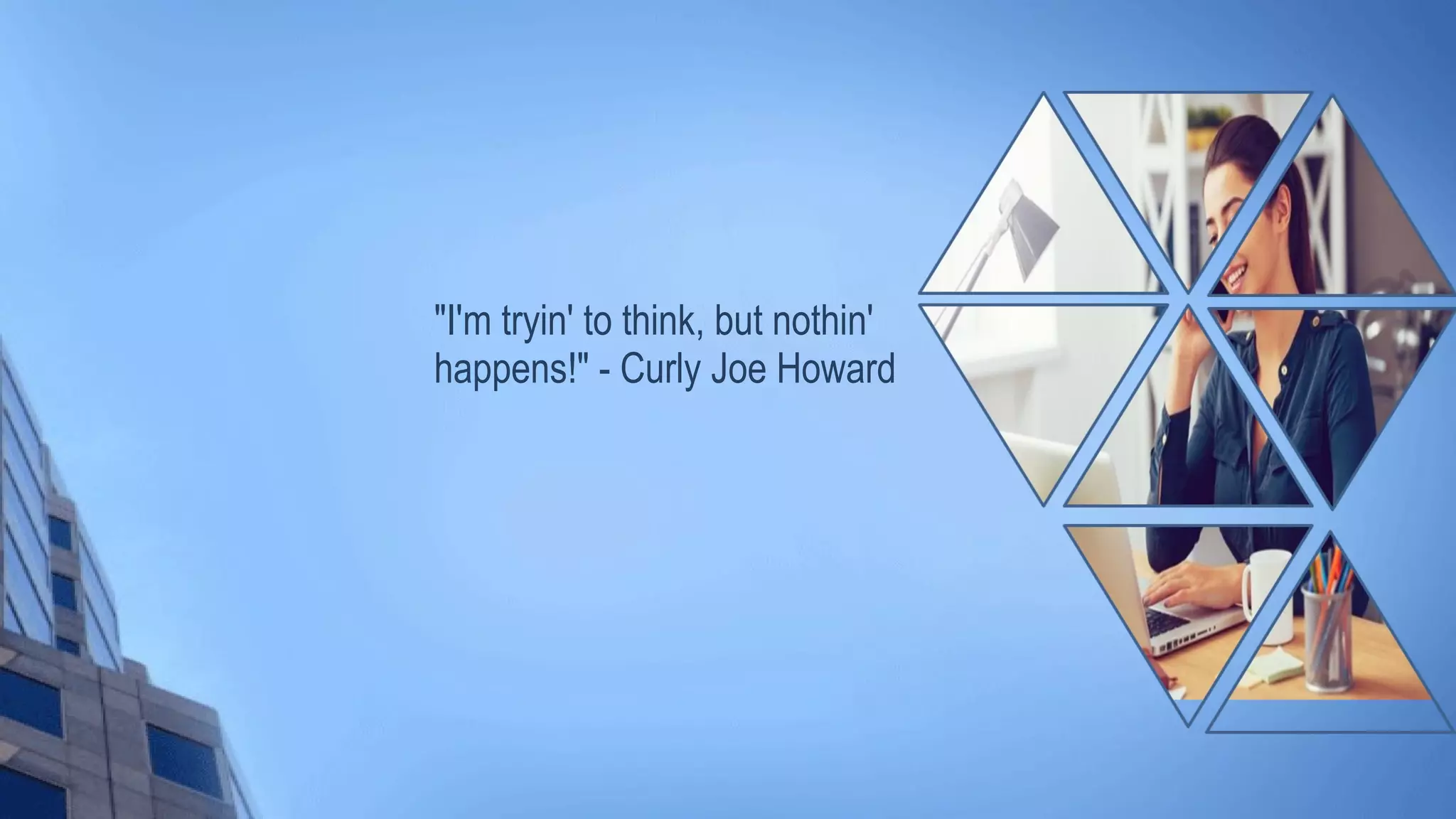
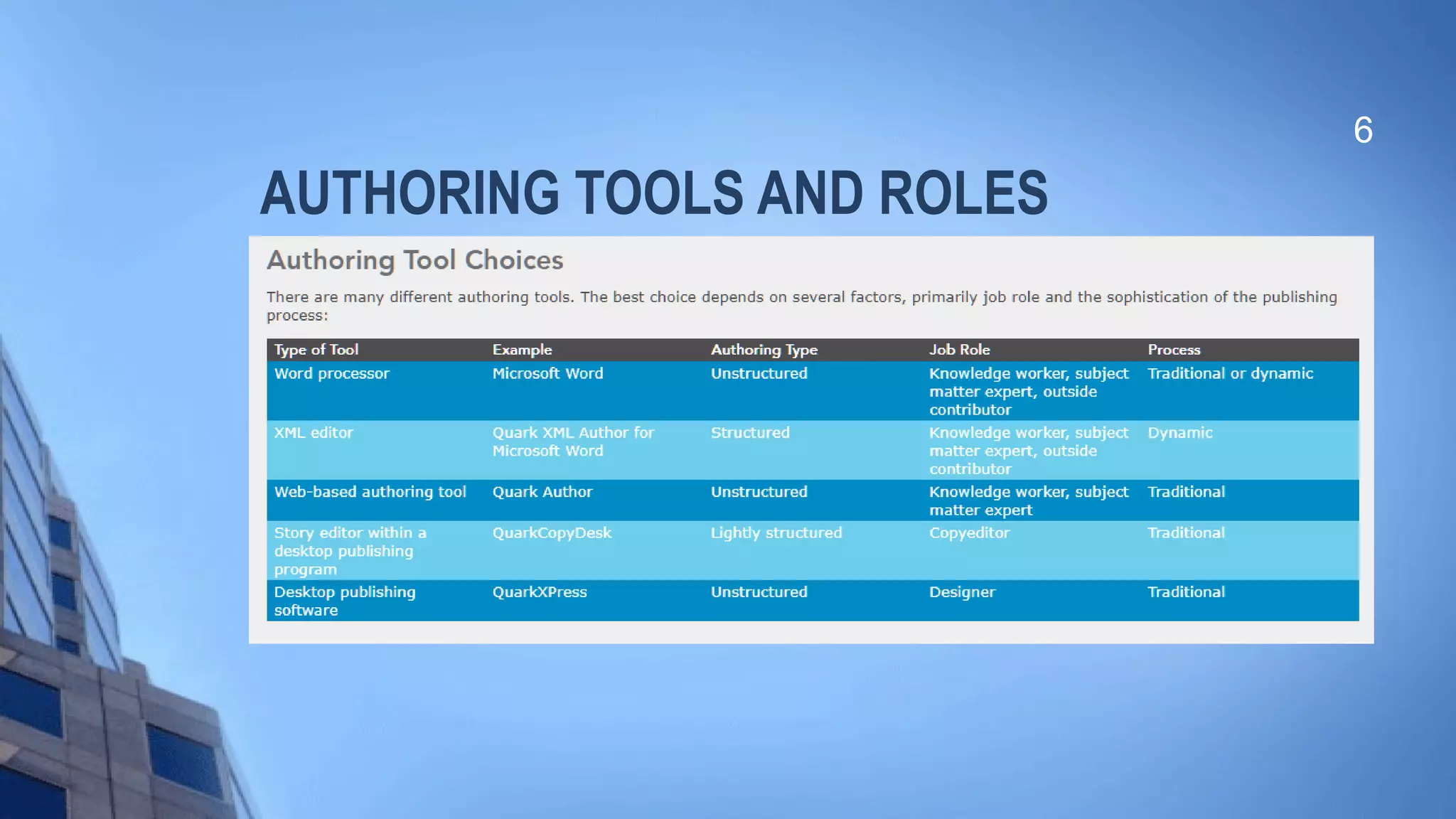

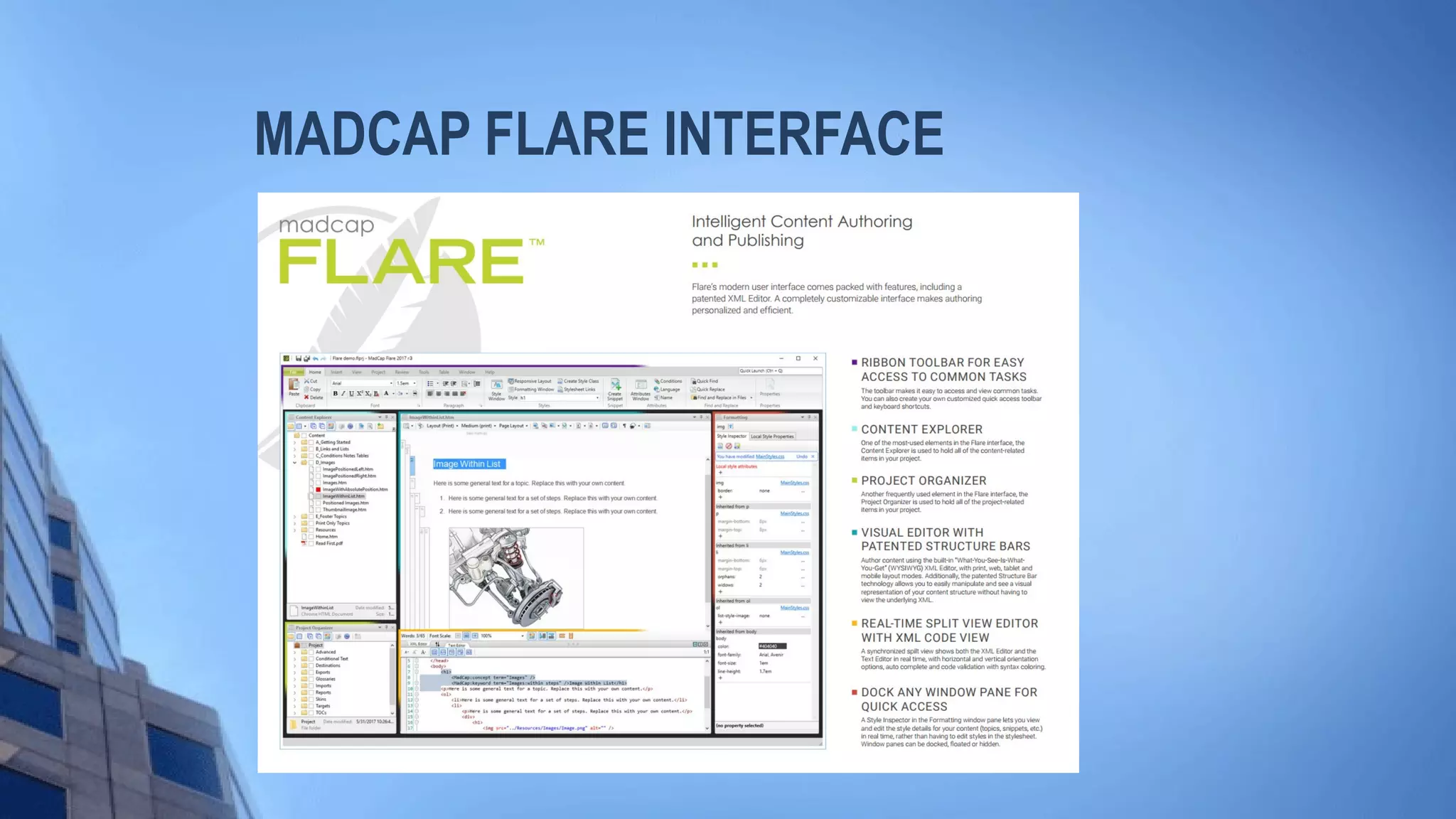
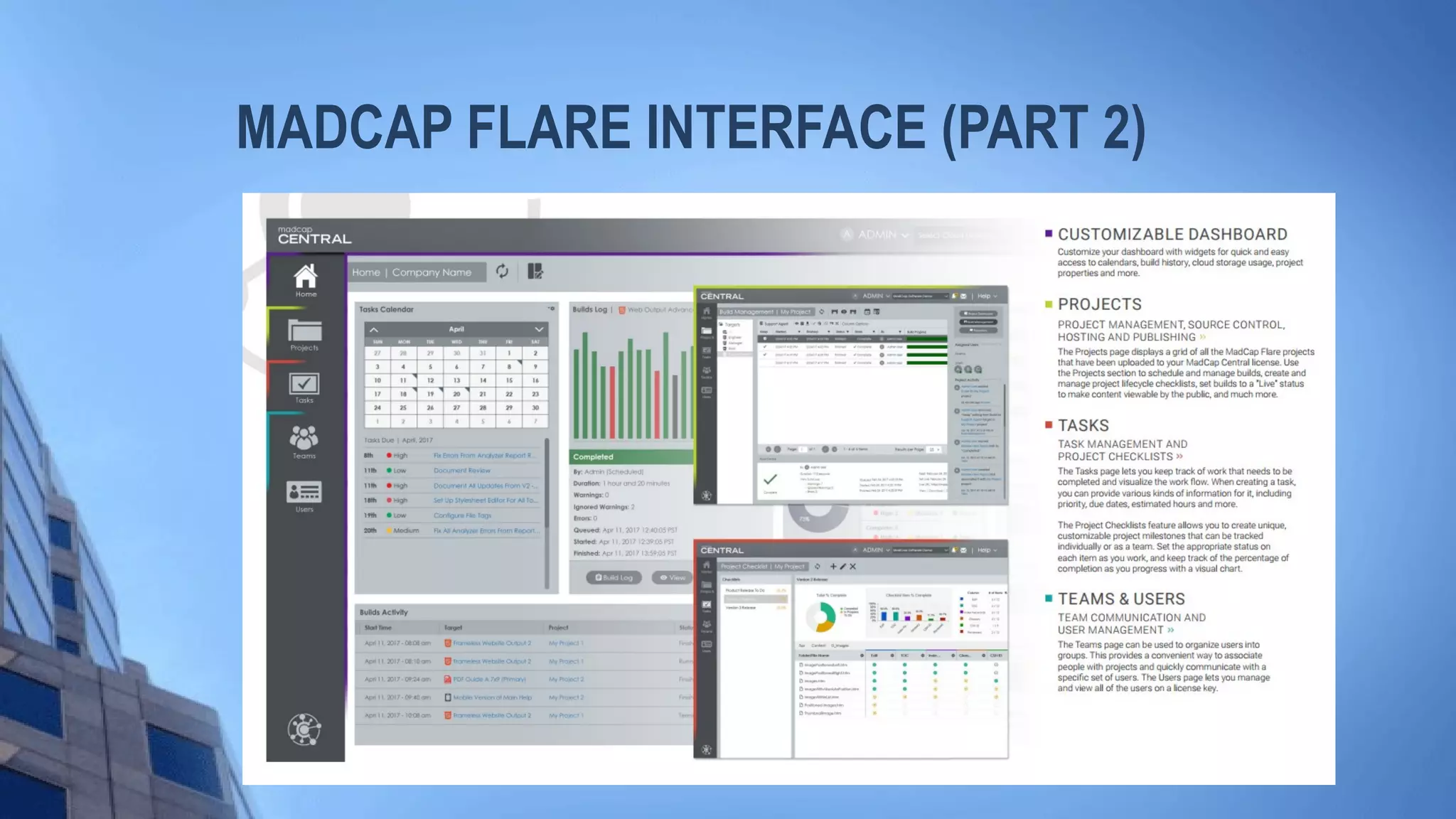

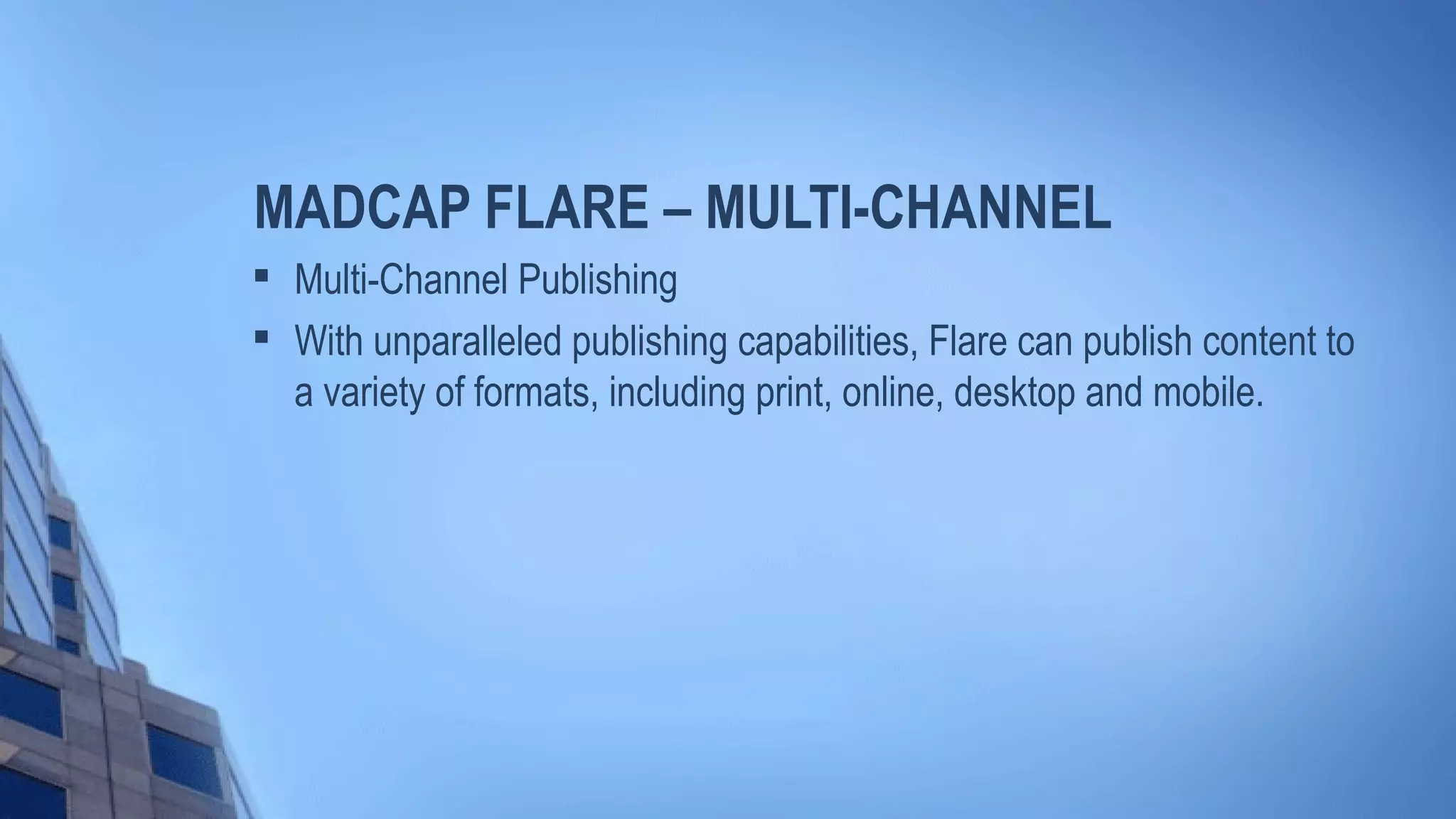
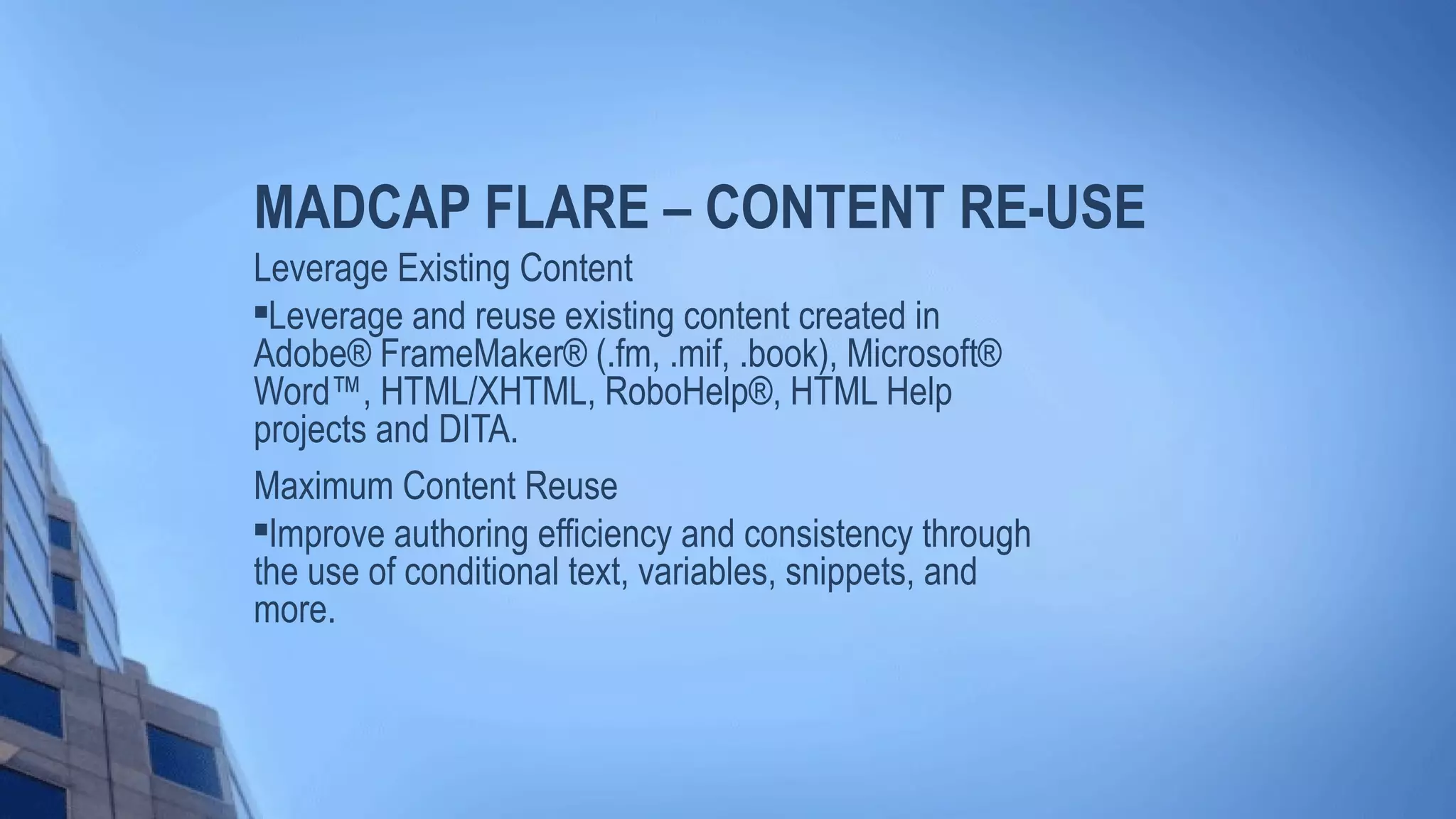

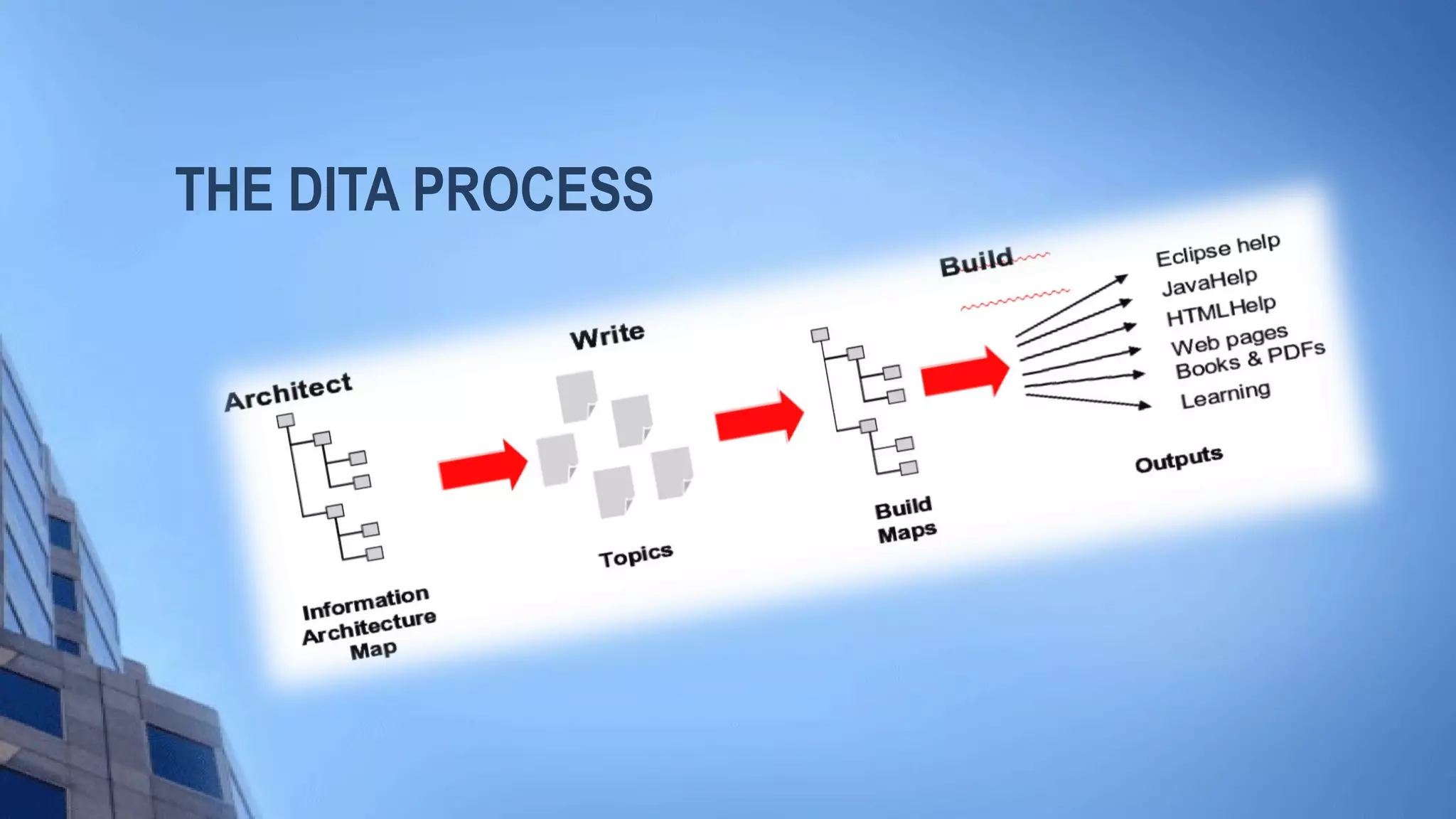
![WHAT IS DITA?
The Darwin Information Typing
Architecture or Document Information Typing
Architecture (DITA) is an XML data model (and
open standard) for authoring and publishing. It is an
open standard[1]
that is defined and maintained by the
OASIS DITA Technical Committee.[2]
The Darwin Information Typing Architecture (DITA)
is an XML-based, end-to-end architecture for (1)
authoring, (2) producing, and (3) delivering
technical information. This architecture consists of a
set of design principles for creating "information-
typed" modules at a topic level and for using that
content in delivery modes such as online help and
product support portals on the Web.
At the heart of DITA, representing the generic
building block of a topic-oriented information
architecture, is an XML document type definition
(DTD) called "the topic DTD." The extensible
architecture, however, is the defining part of this
design for technical information; the topic DTD, or
any schema based on it, is just an instantiation of the
design principles of the architecture.
15
Laptops, desktops,
mobile phones.
Author Produce Deliver
Info-modules (topics)
DITA (XML)](https://image.slidesharecdn.com/dita-171102193917/75/DITA-Single-source-Multi-channel-Publishing-15-2048.jpg)
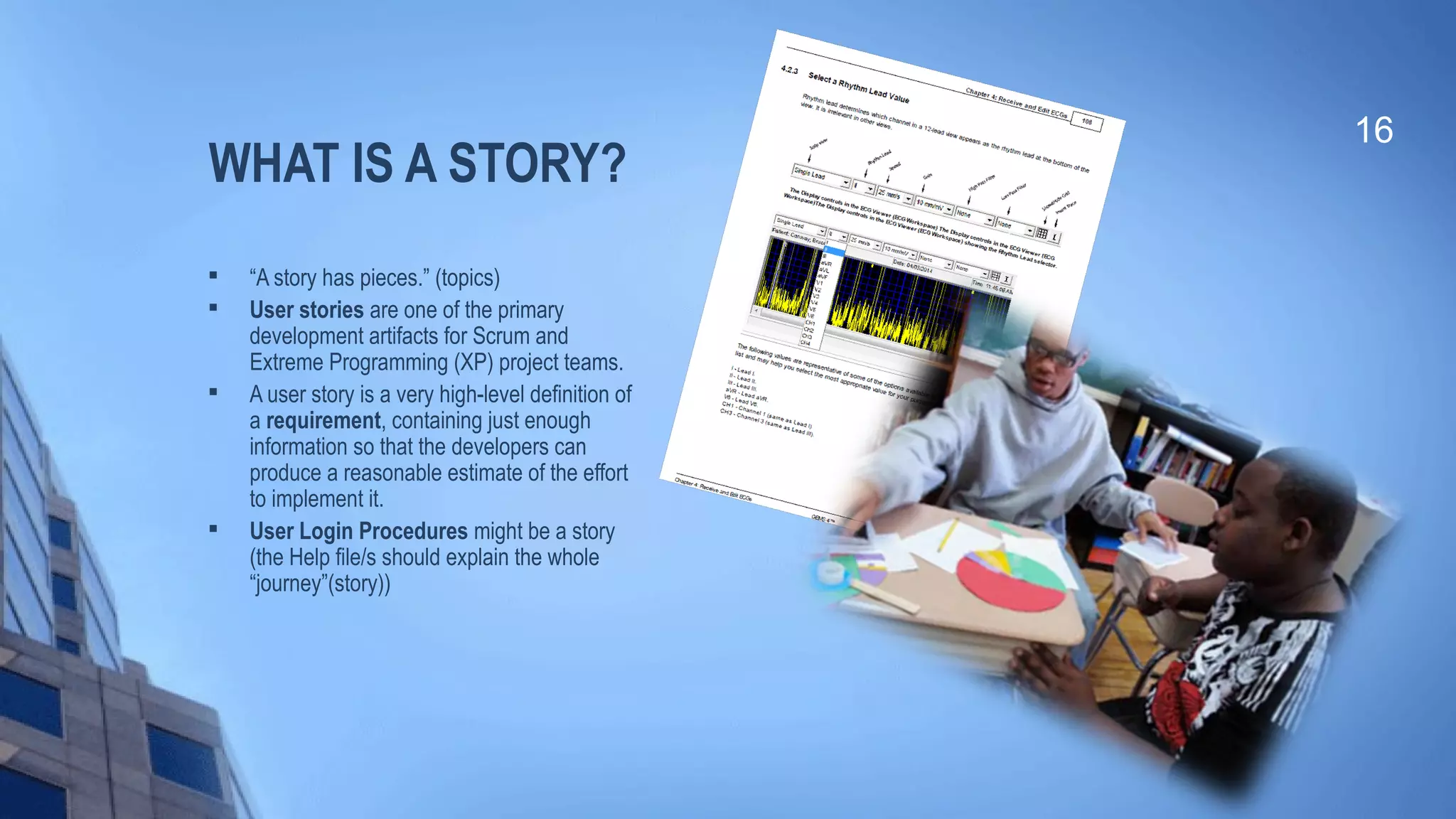

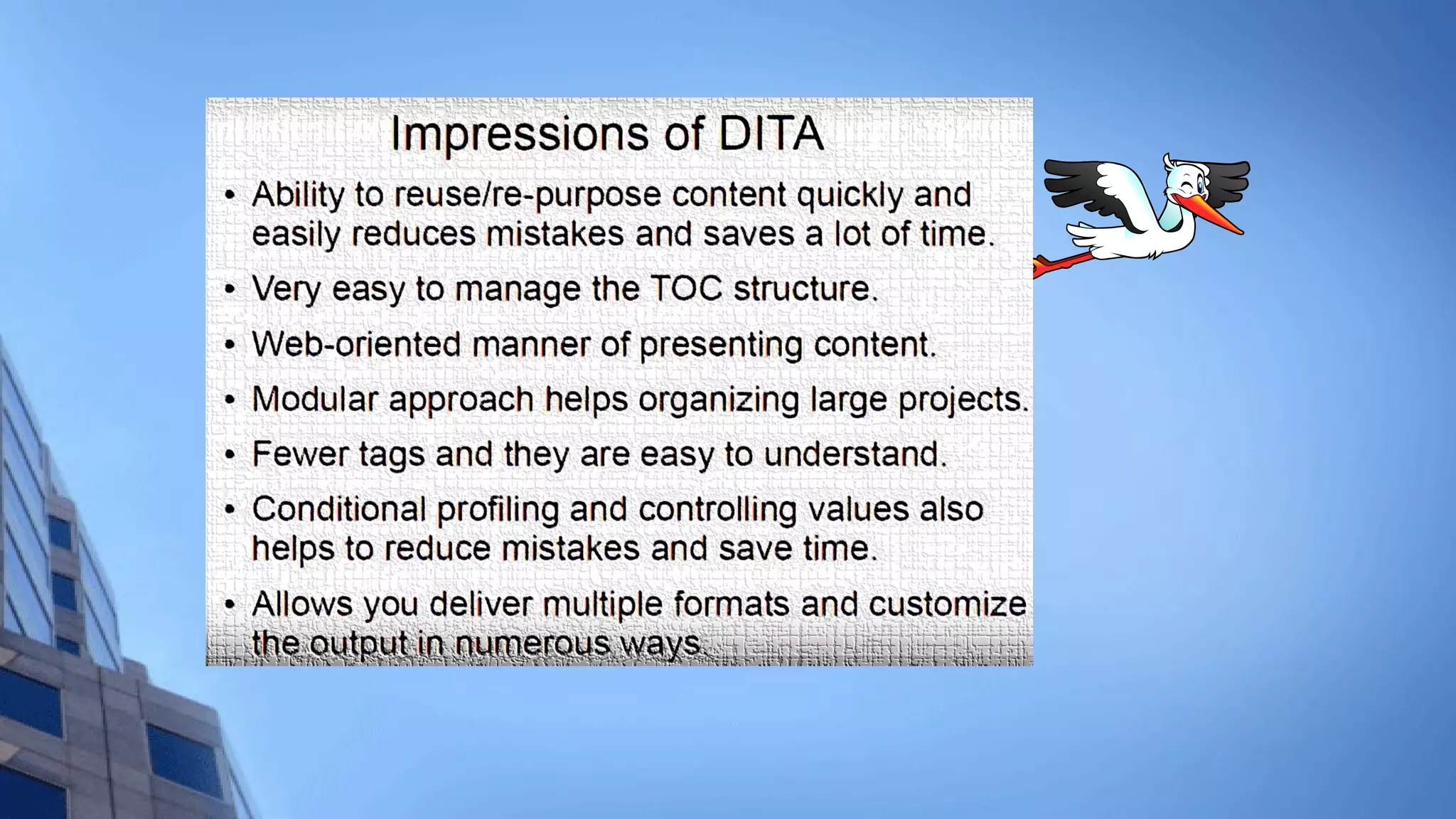
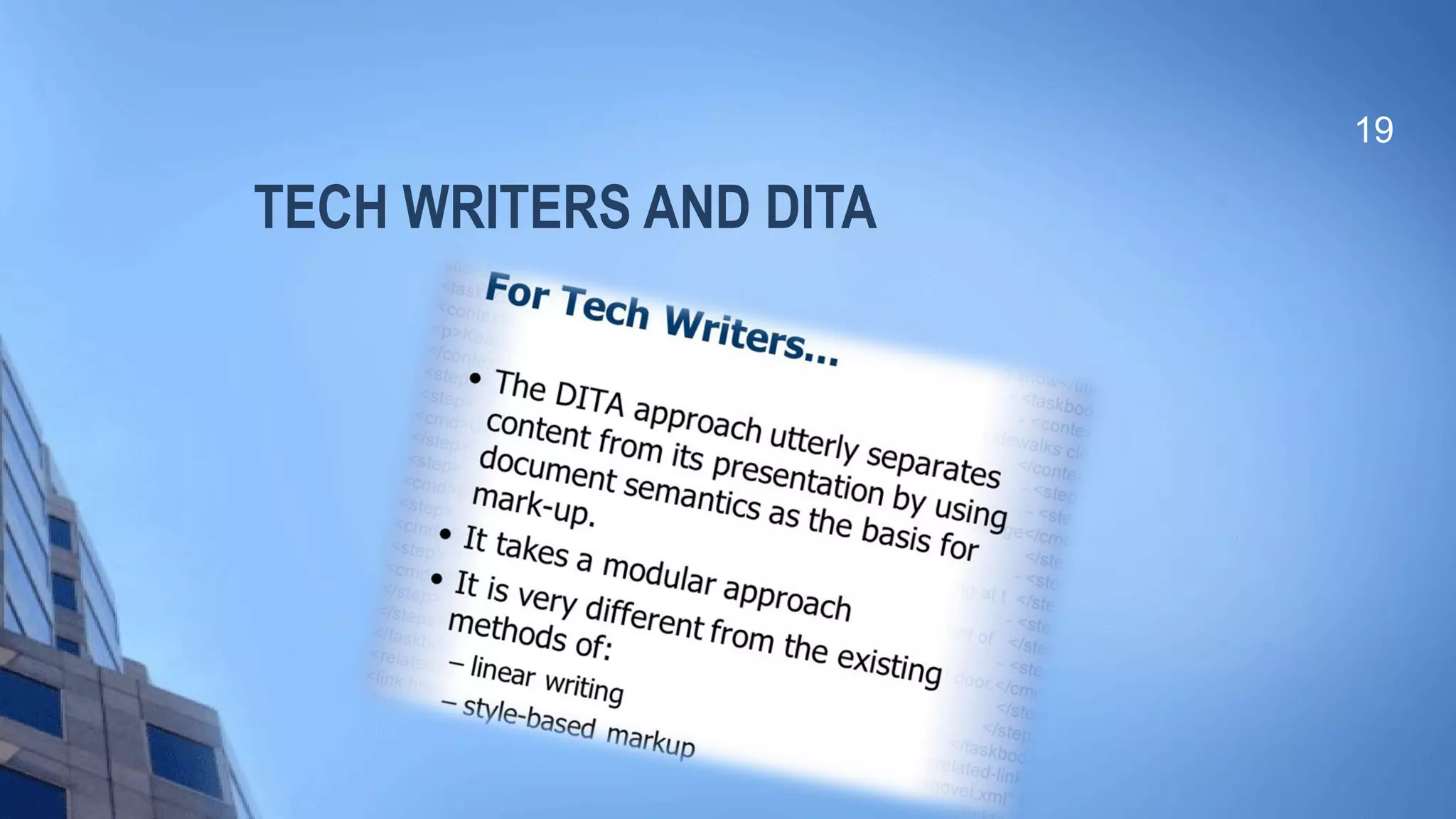
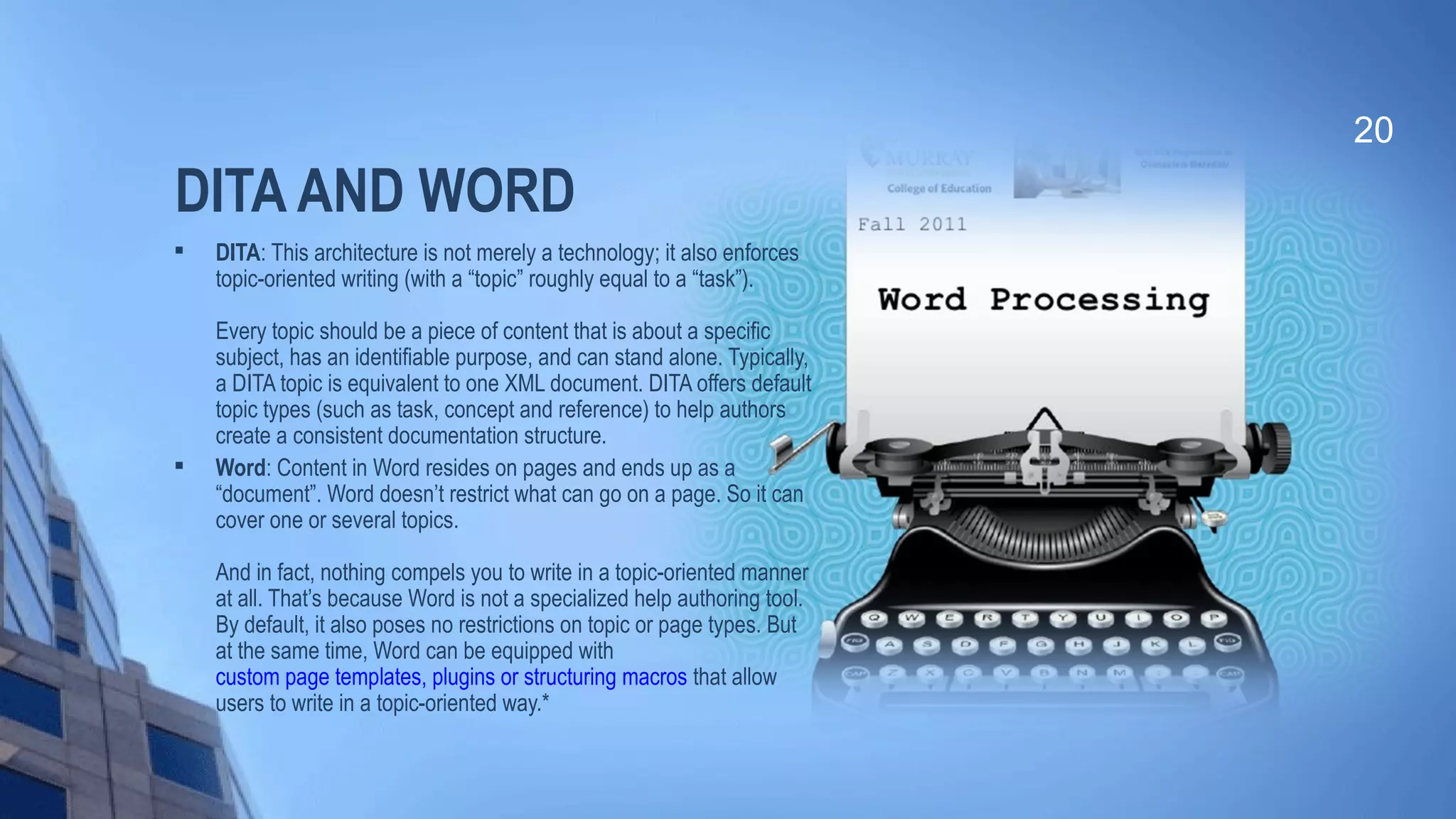
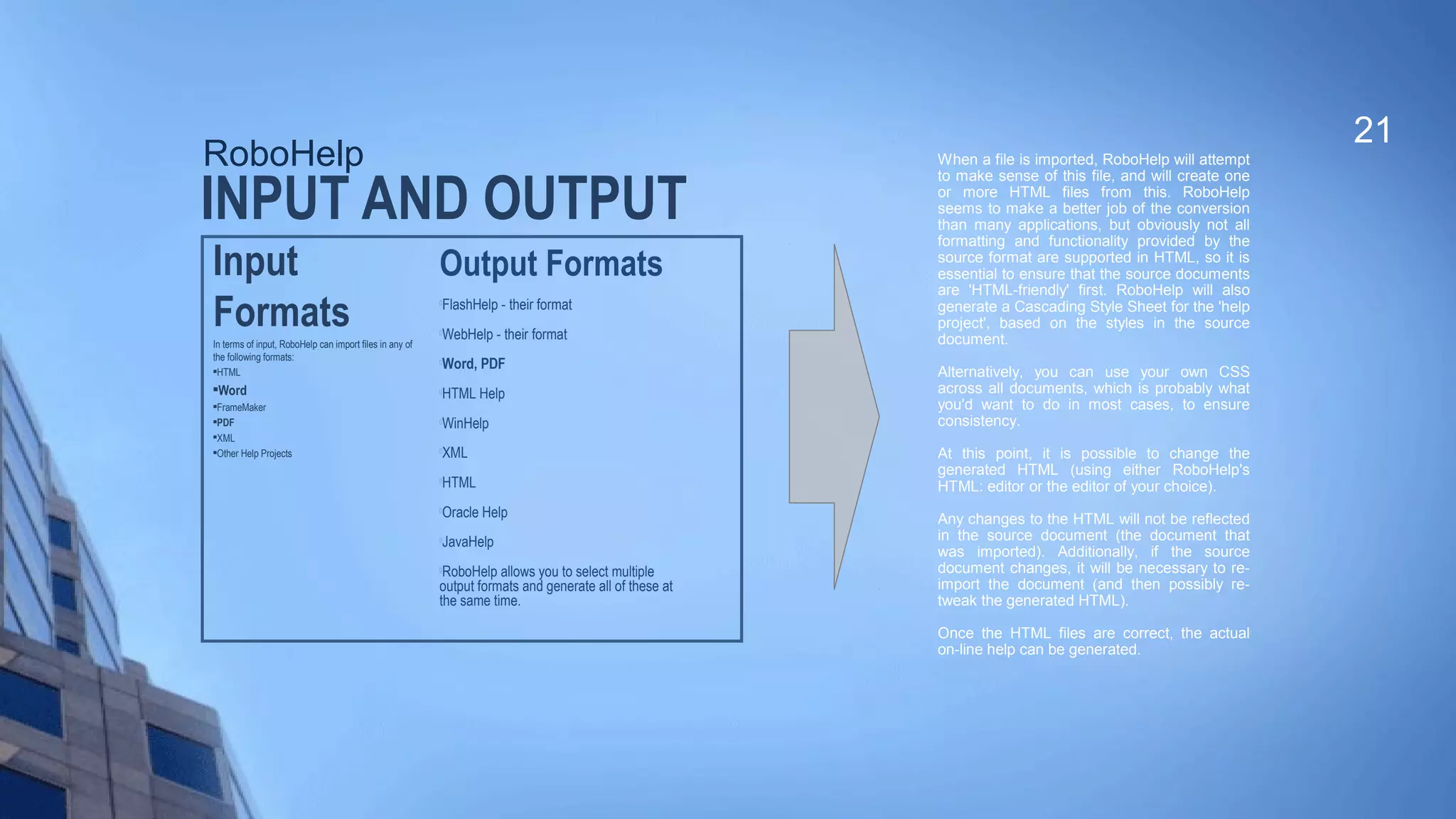
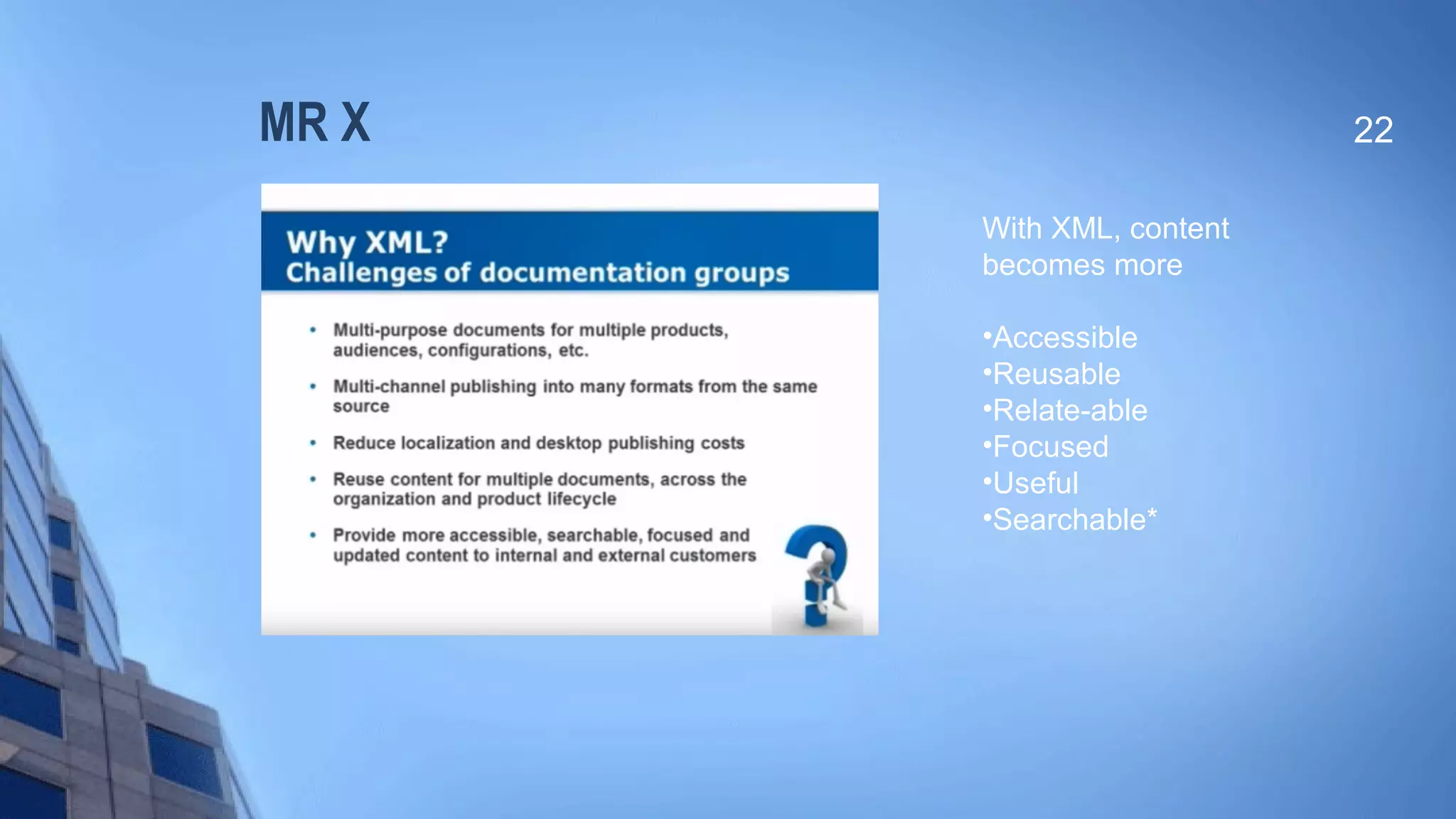
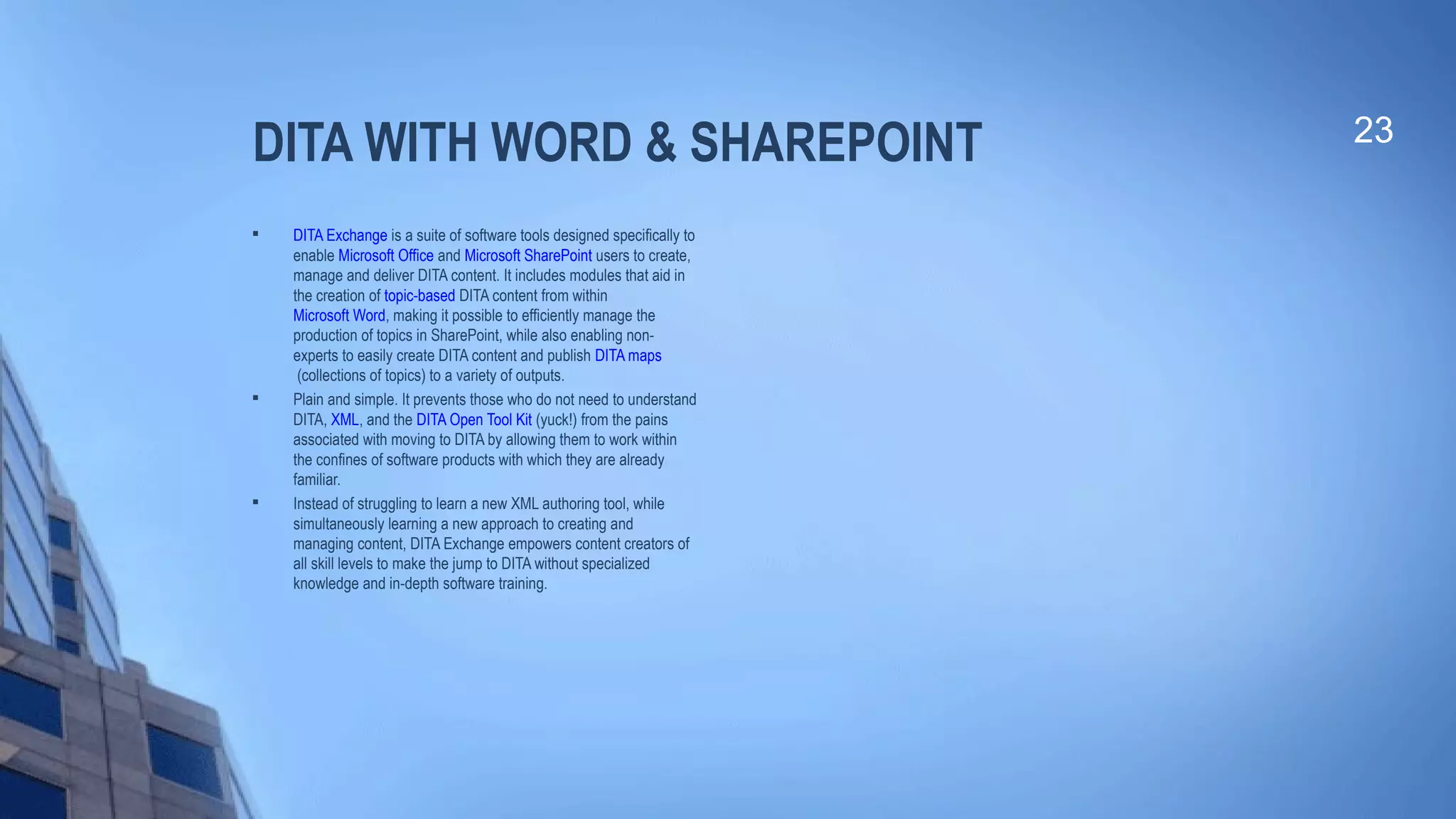
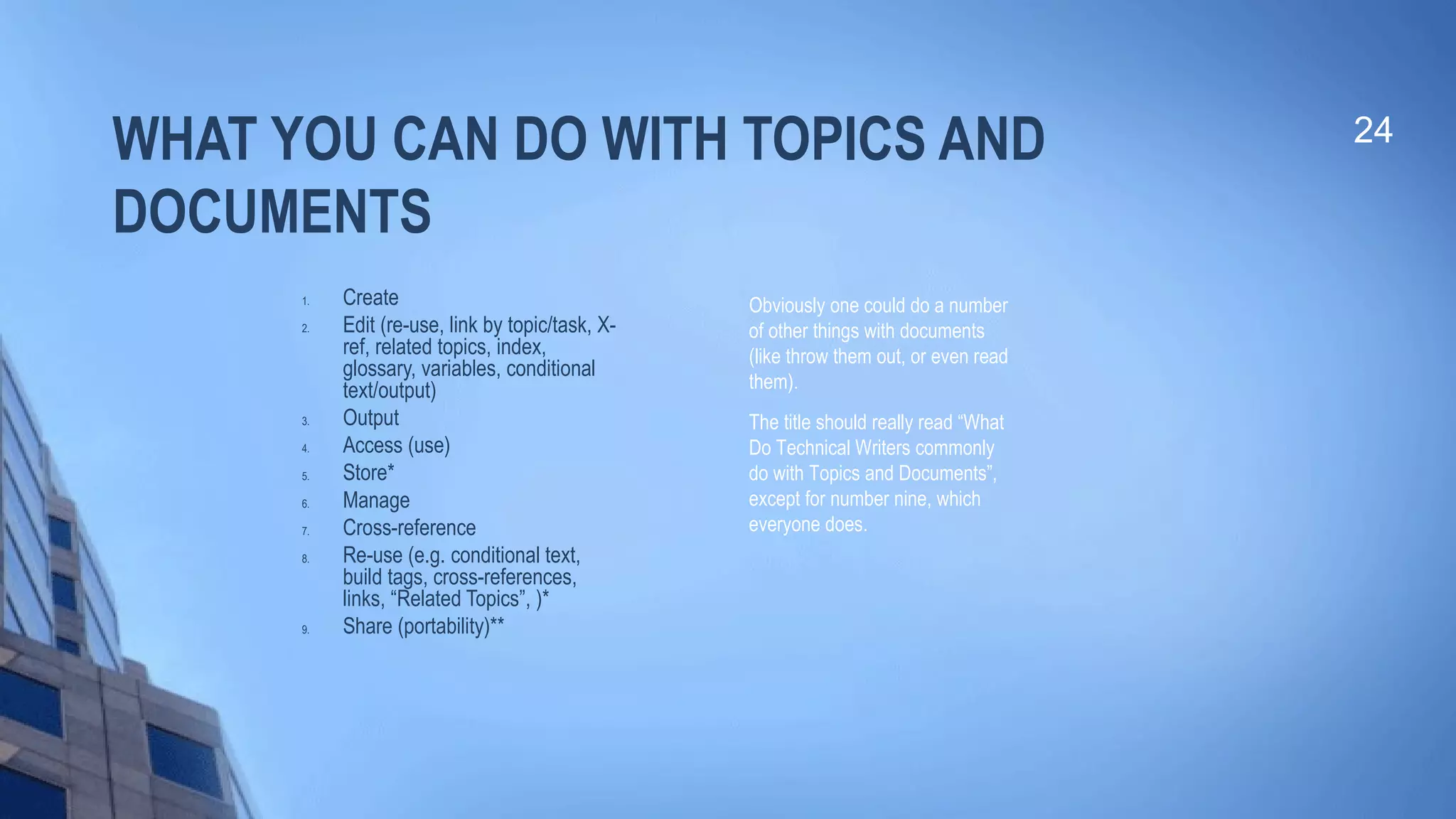
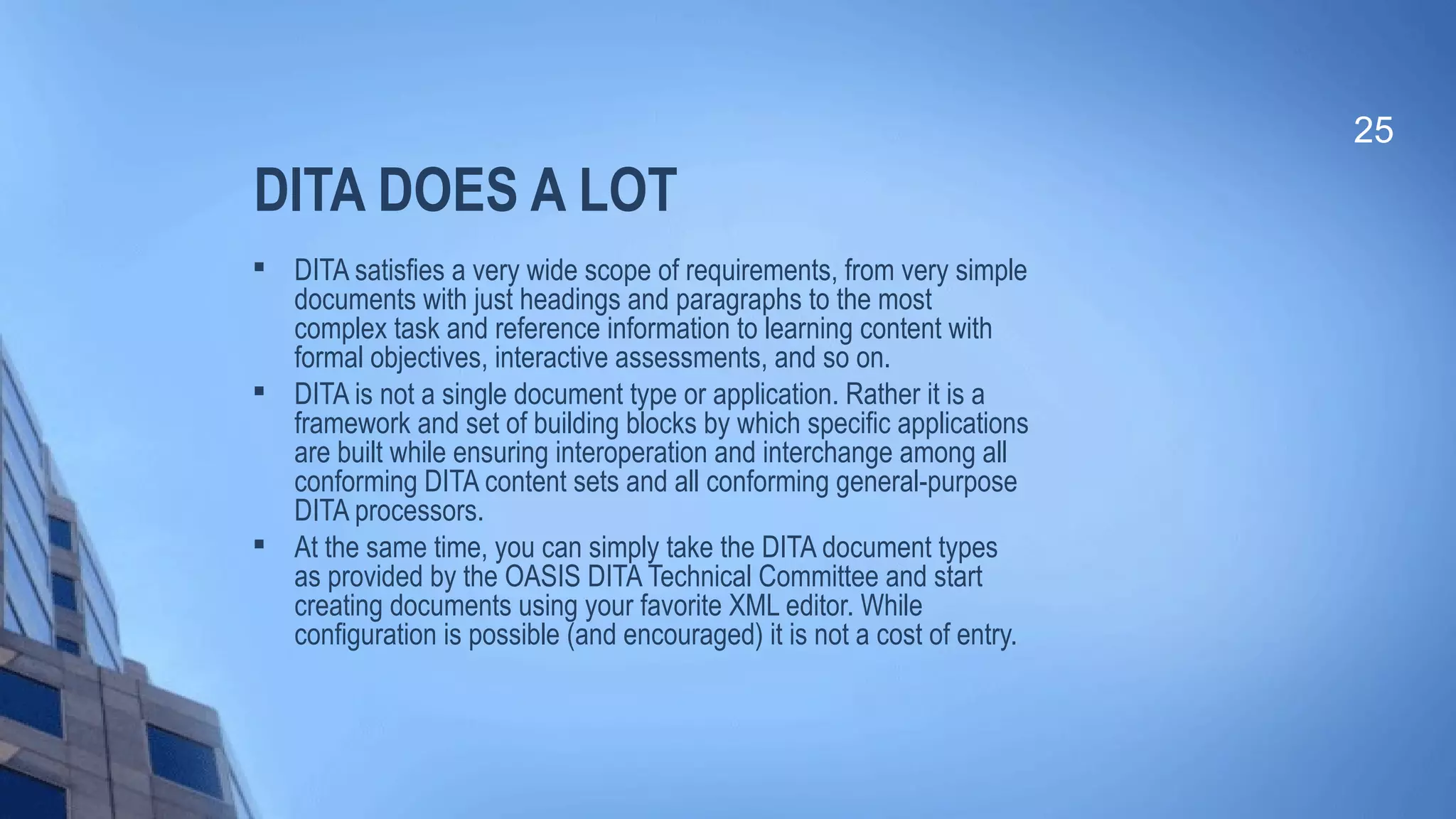
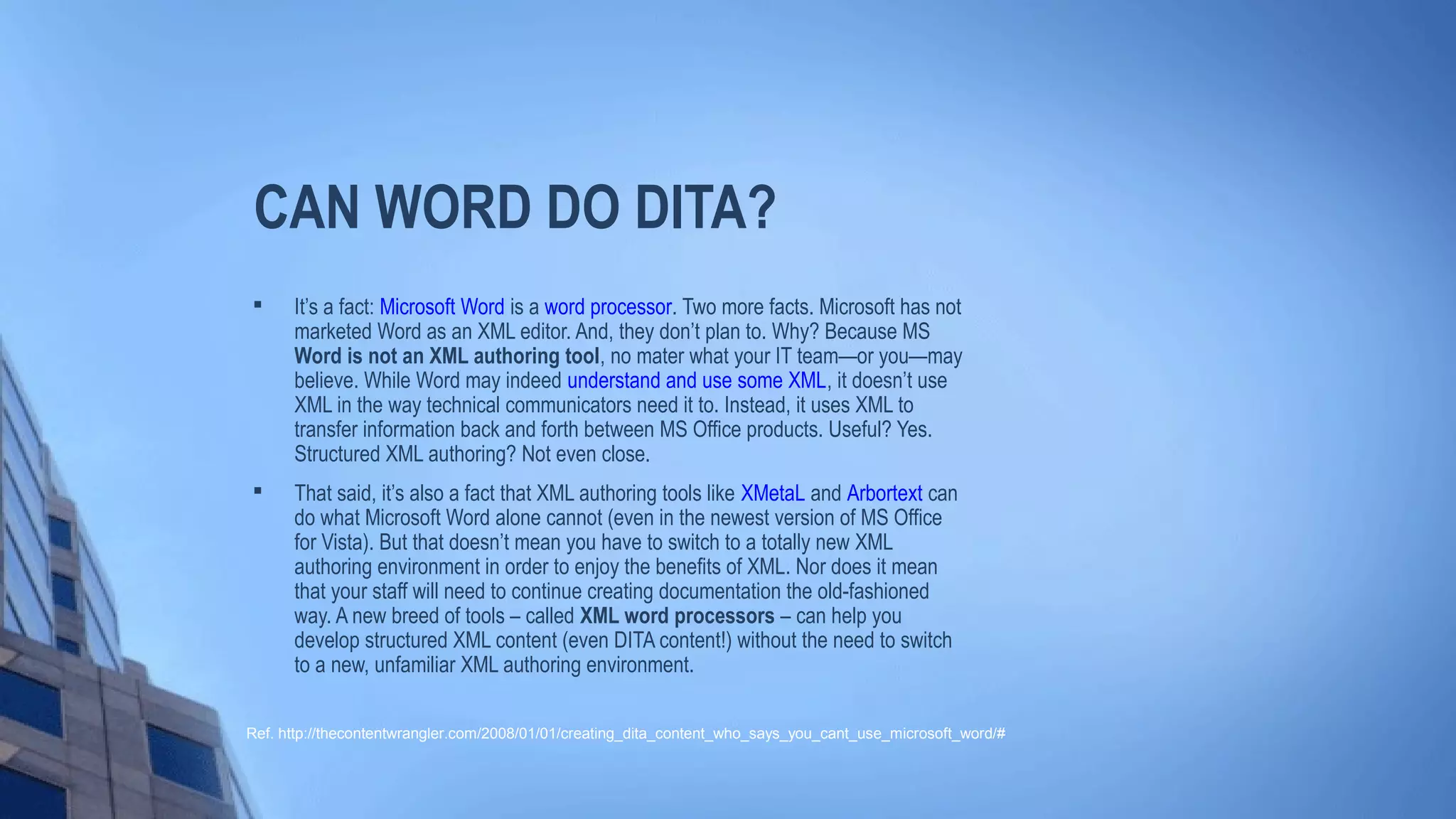
![DITA AND AGILE
DITA has a well-established ecosystem of
supporting tools, both commercial and free
open source, as well as an active and growing
community of users, consultants, and tool
providers.
DITA is well supported by all the major
commercial XML editors and XML component
content management systems. The open-
source DITA Open Toolkit provides the main
DITA processing implementation used by the
community.
DITA's modularity and extensibility make it
well adapted to agile development
methodologies because you can get started
quickly and then iteratively refine your use of
DITA as required, either removing the things
you don't need or adding new things to meet
your specific requirements.
27
Agile software development describes a set
of values and principles for
software development under which
requirements and solutions evolve through the
collaborative effort of self-organizing
cross-functional teams.[1]
It advocates adaptive
planning, evolutionary development, early
delivery, and continuous improvement, and it
encourages rapid and flexible response to
change.[2]
These principles support the
definition and continuing evolution of many
software development methods.[3]
The term agile (sometimes written Agile)[4]
was
popularized by the
Manifesto for agile software development,[5]
which defines those values and principles.
Agile software development frameworks
continue to evolve,[3]
two of the most widely
used being Scrum and Kanban.[6]](https://image.slidesharecdn.com/dita-171102193917/75/DITA-Single-source-Multi-channel-Publishing-27-2048.jpg)
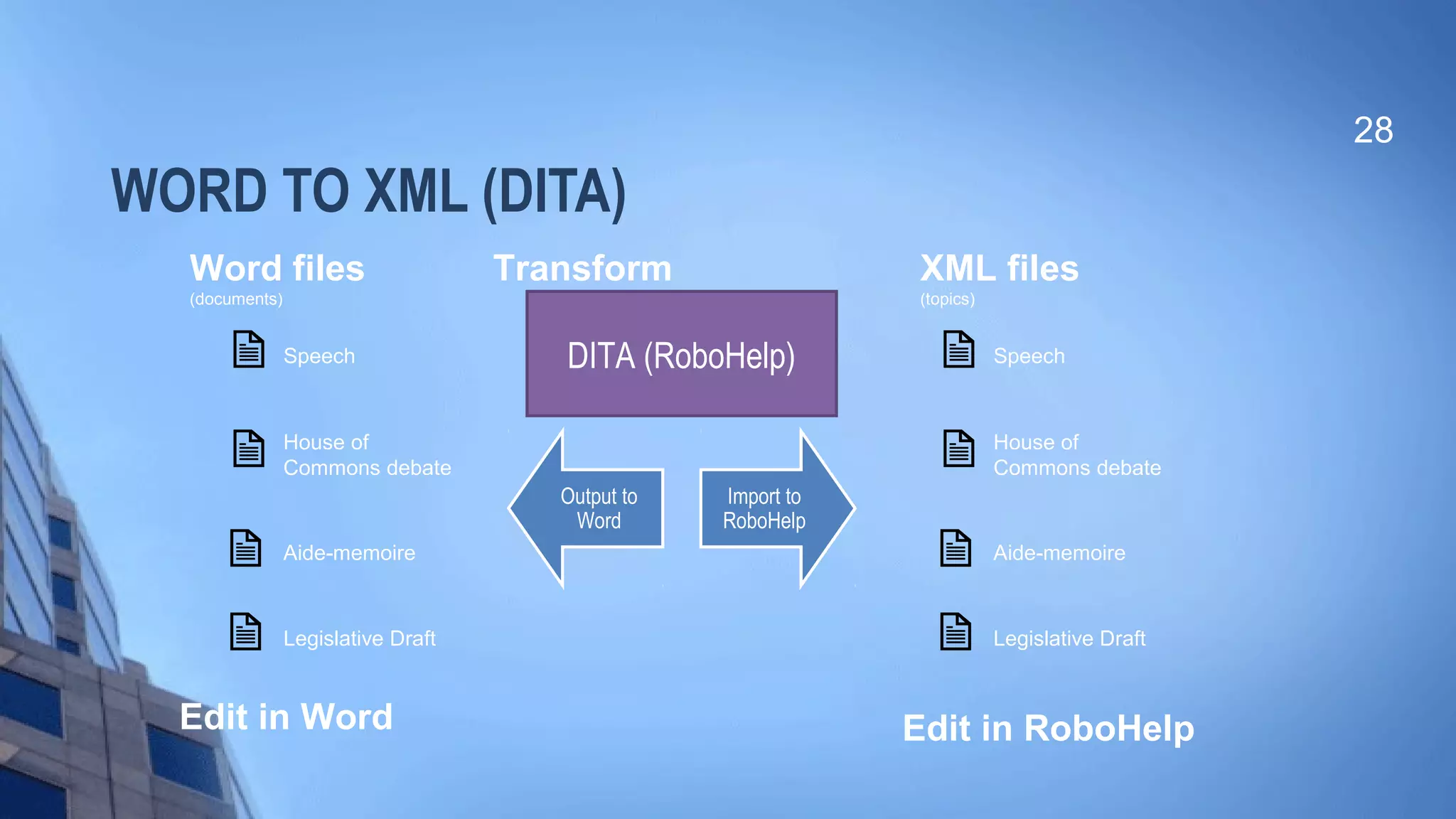
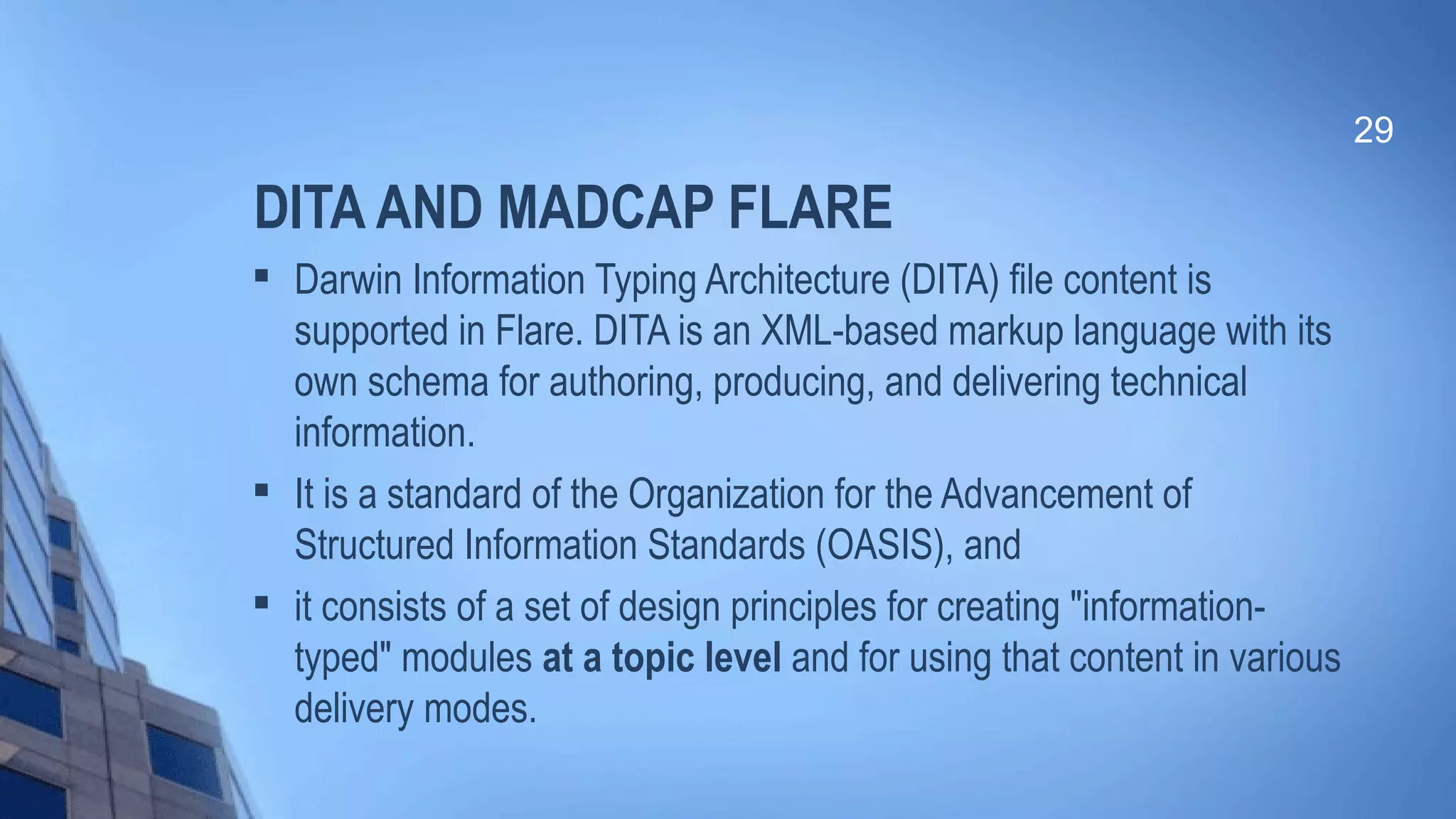
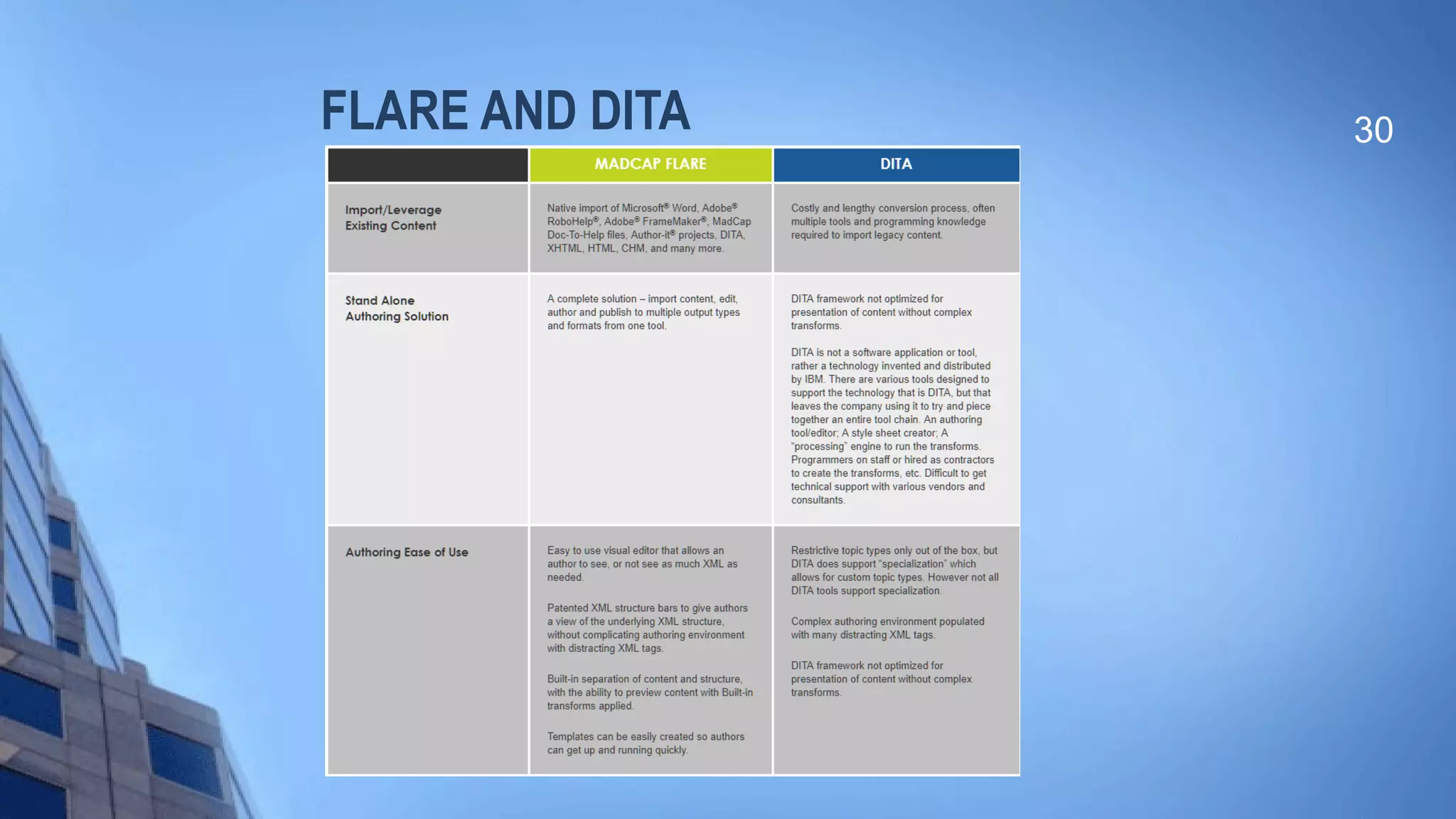


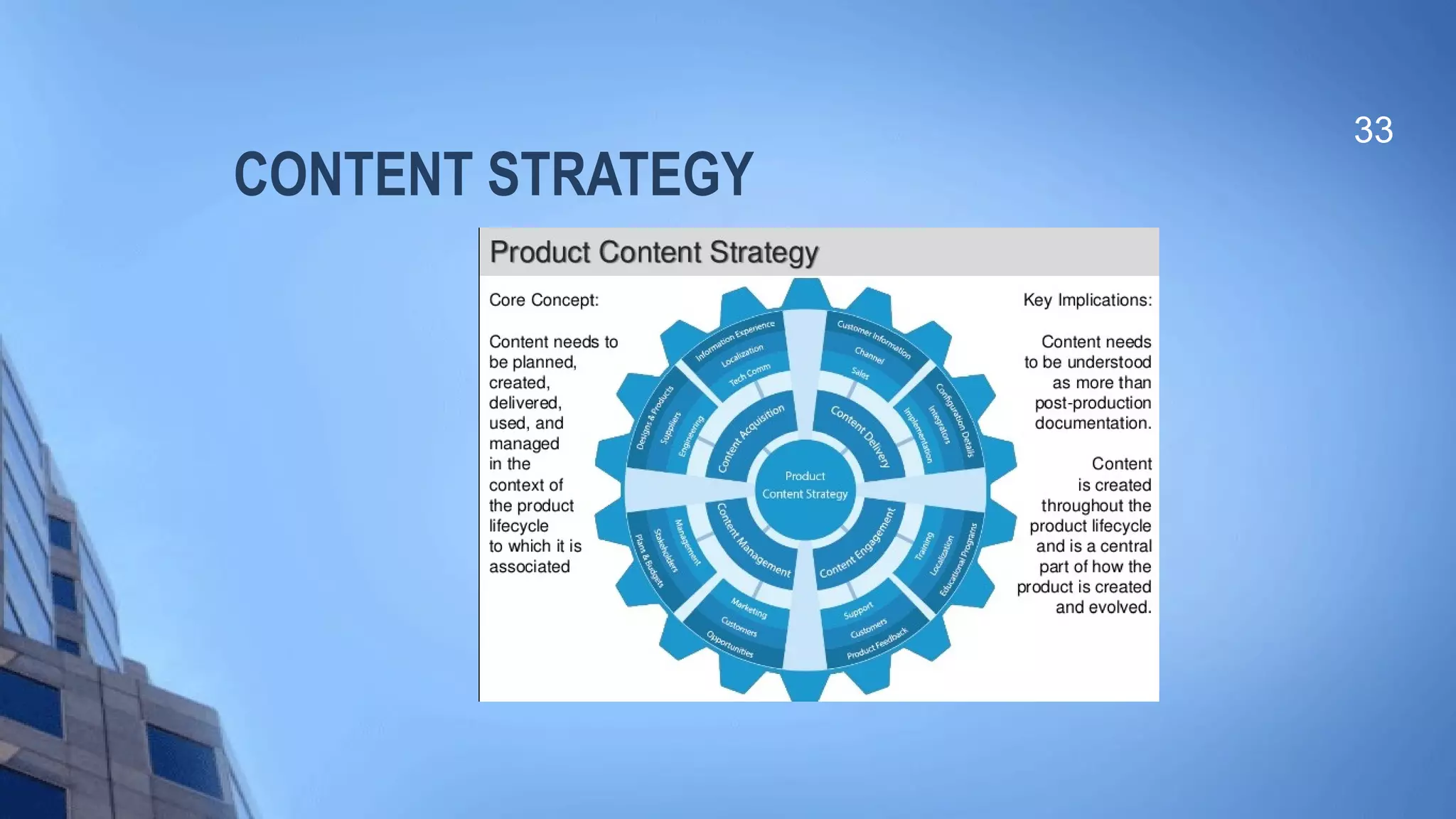
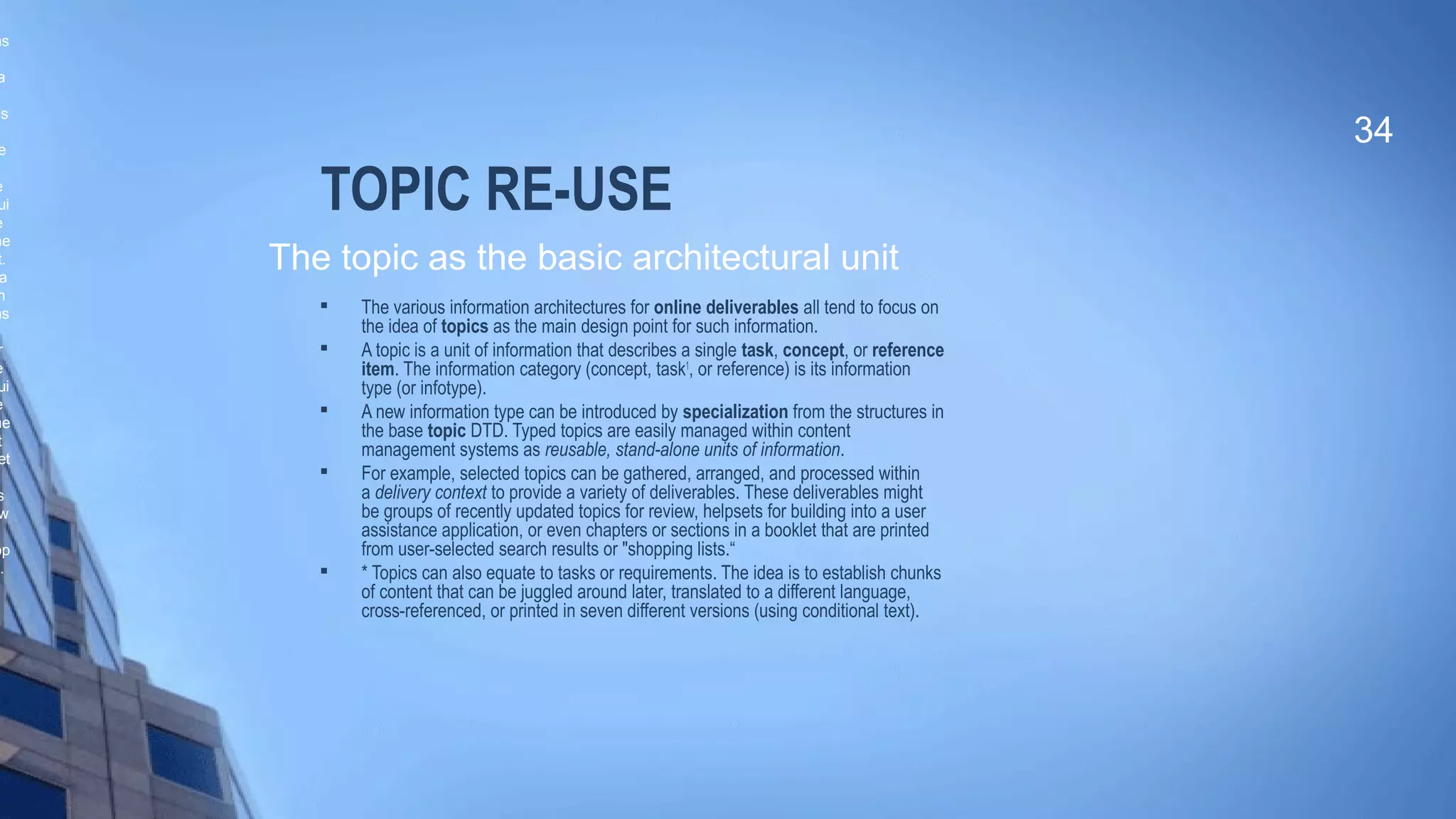
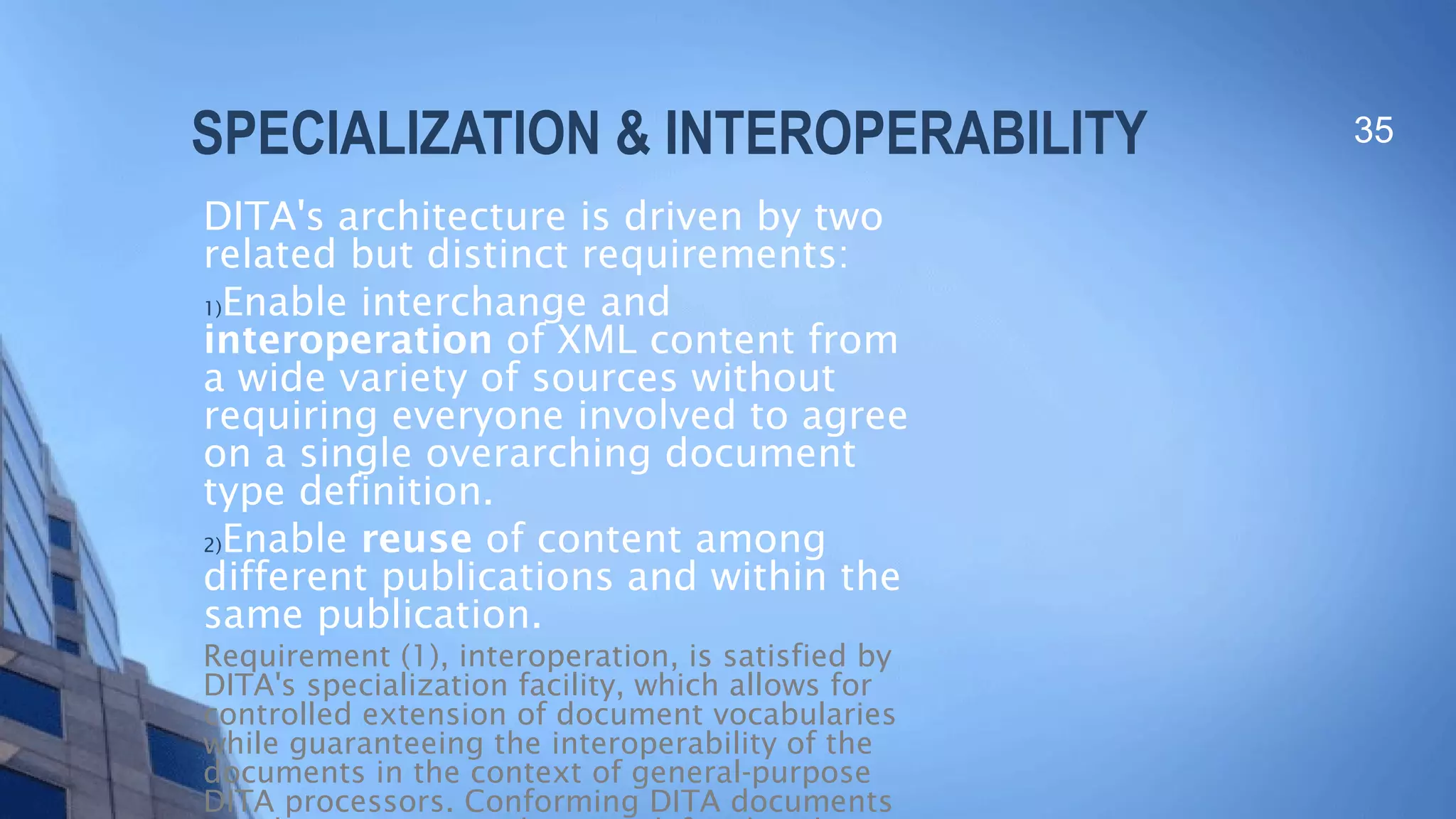
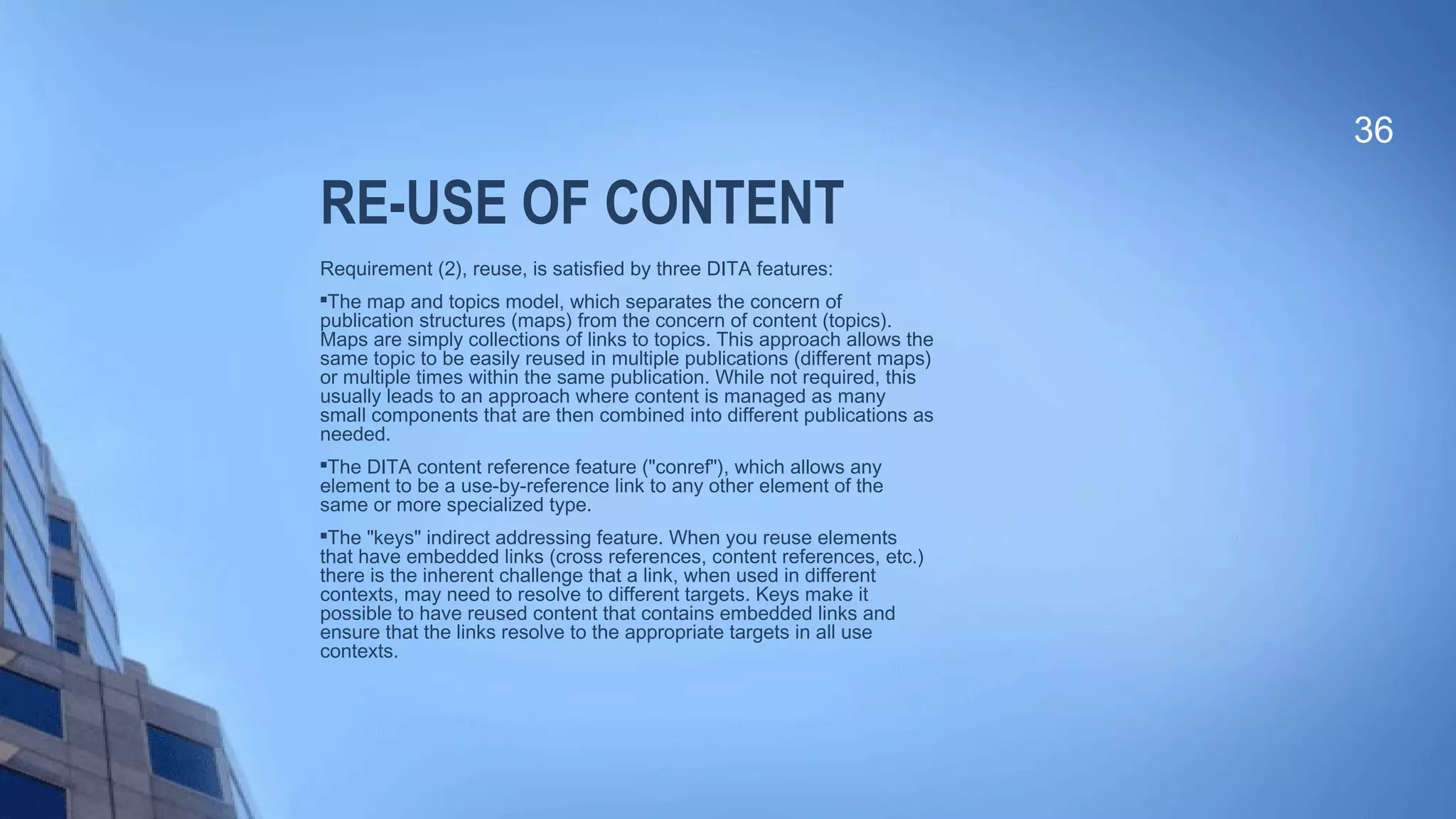
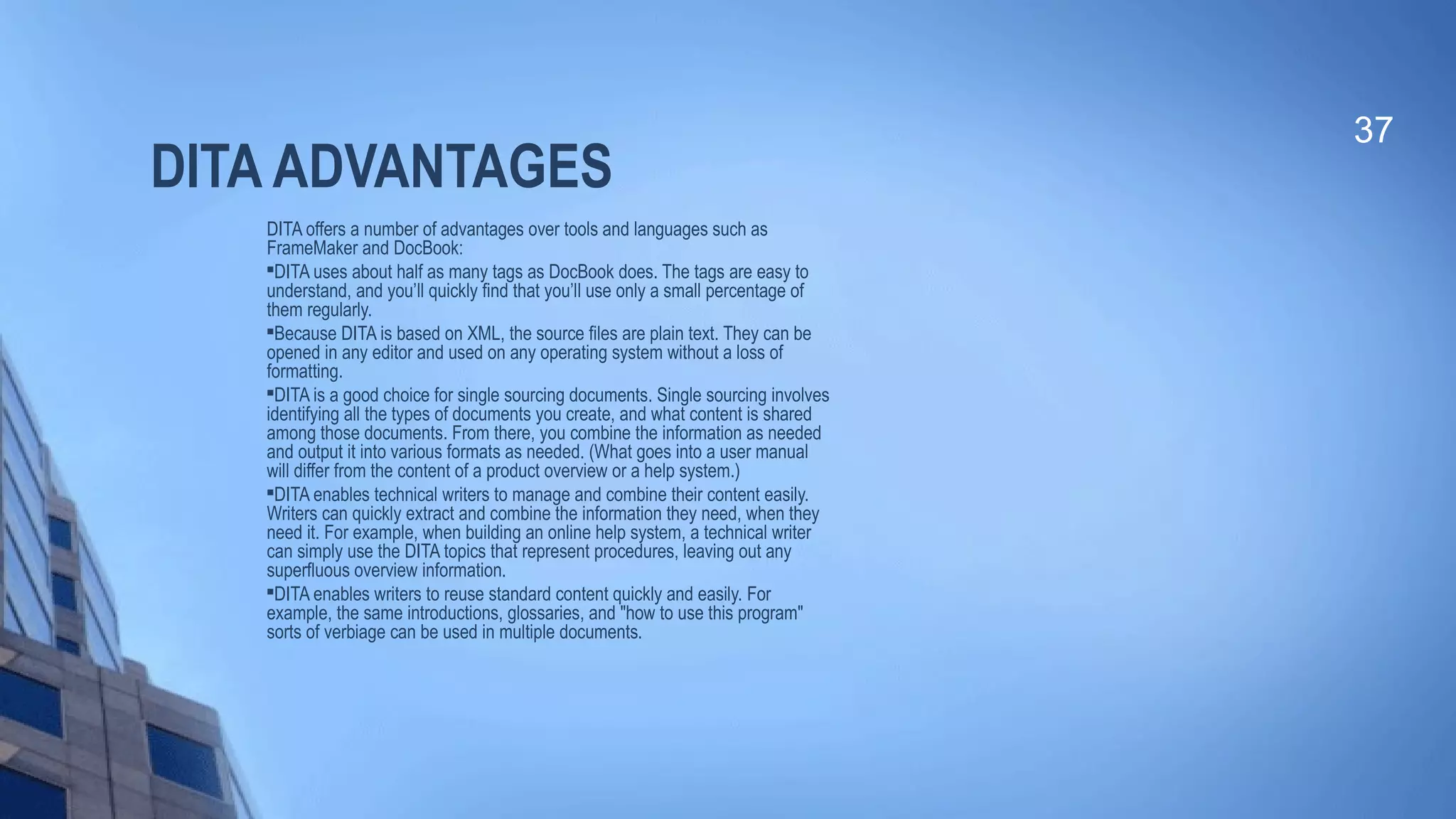

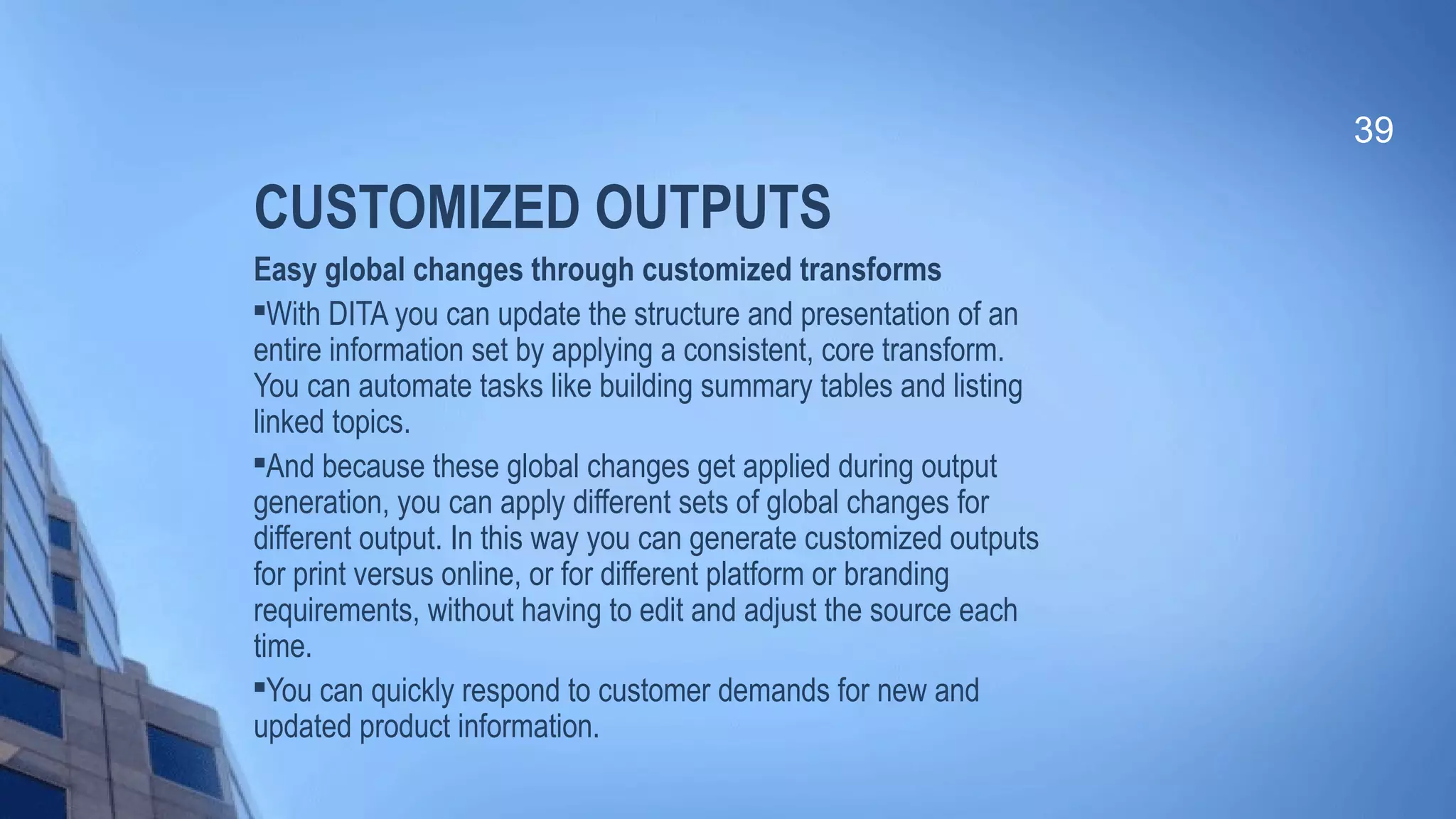
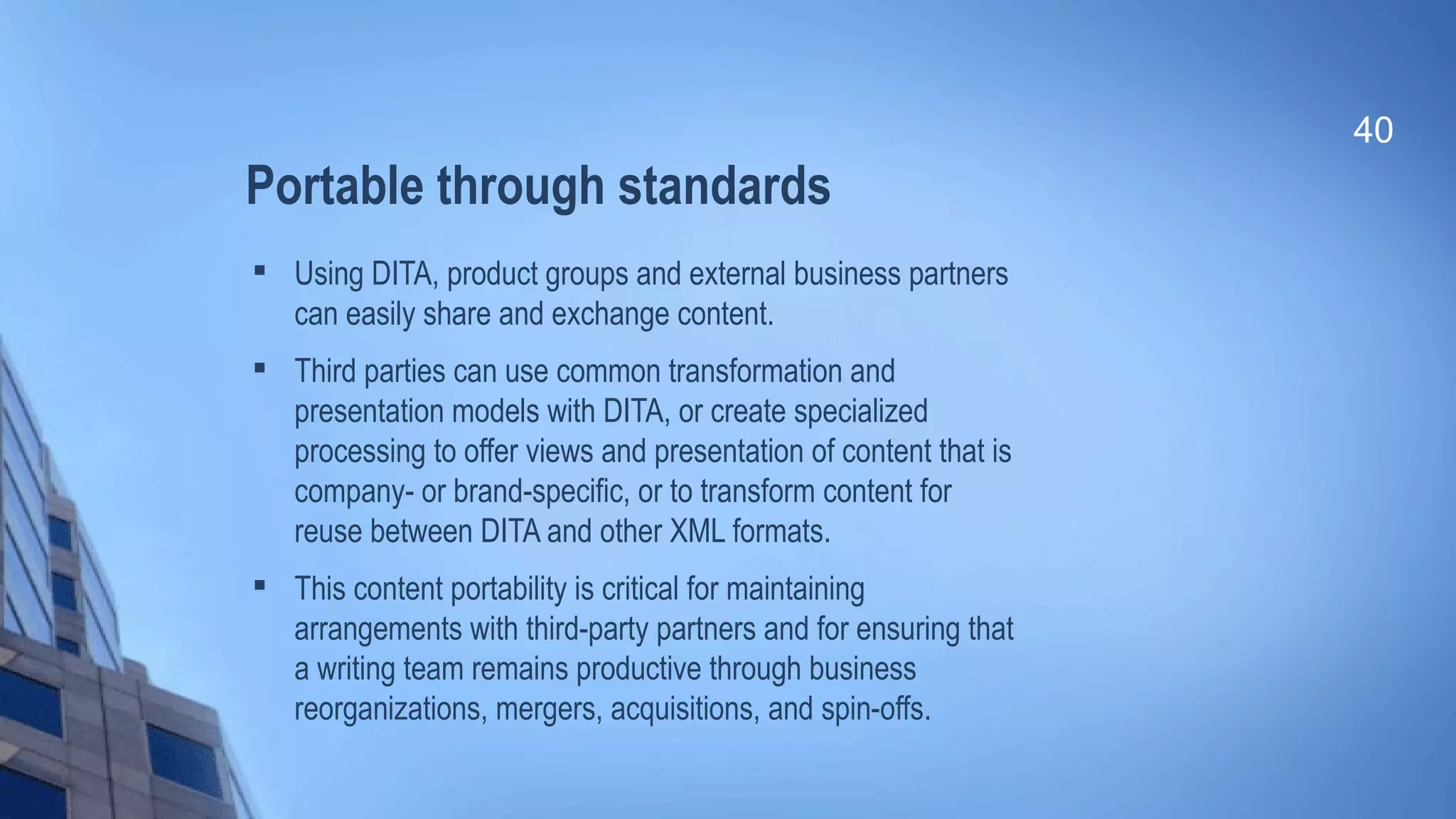
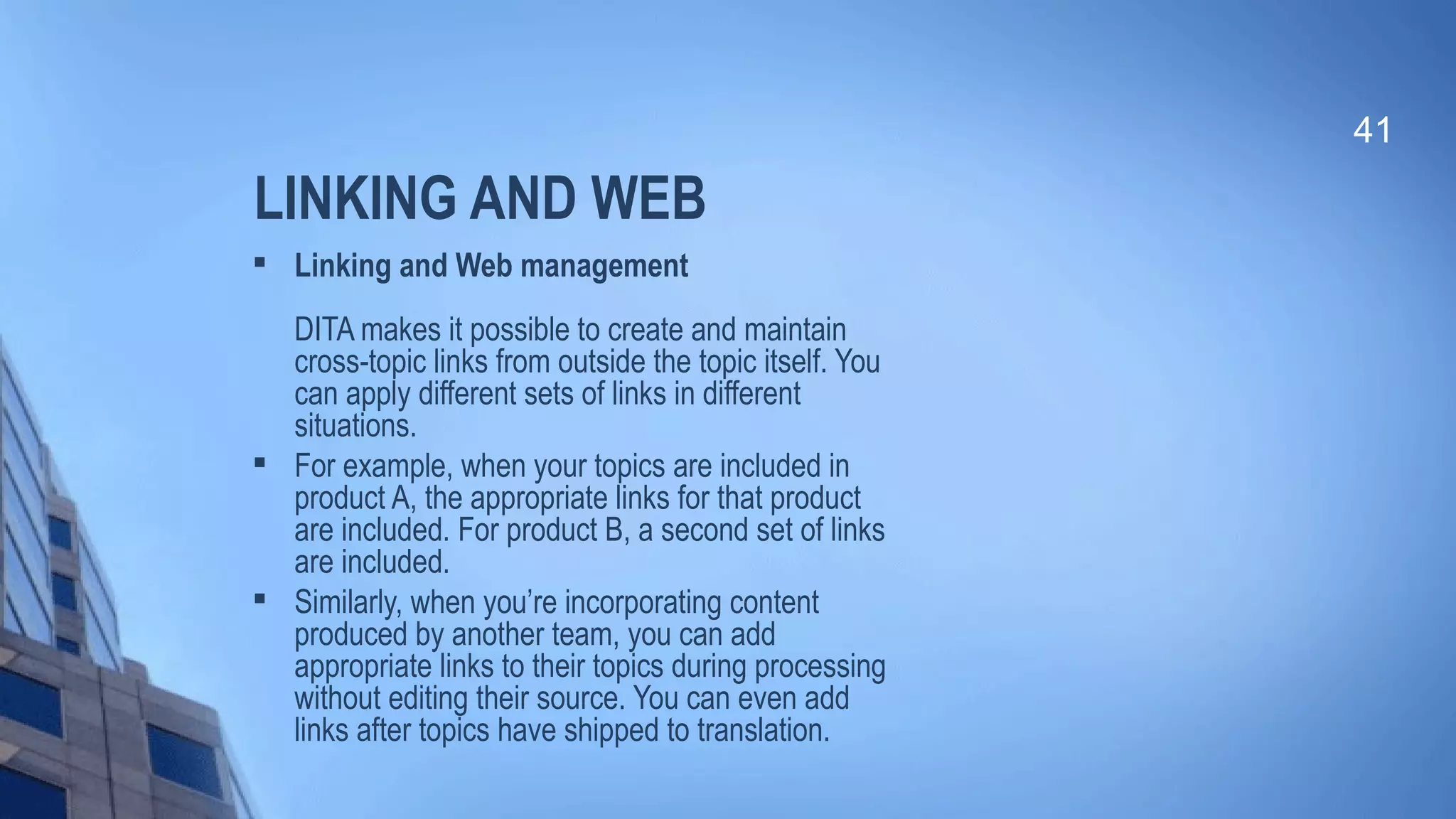

![THE DITA NAME
The DITA name derives from the following
components:
Darwin: it uses the principles of
specialization and inheritance, which is in
some ways analogous to the naturalist
Charles Darwin's concept of evolutionary
adaptation,
Information Typing, which means each
topic has a defined primary objective
(procedure, glossary entry, troubleshooting
information) and structure,
Architecture: DITA is an extensible set of
structures.[3]
43](https://image.slidesharecdn.com/dita-171102193917/75/DITA-Single-source-Multi-channel-Publishing-43-2048.jpg)
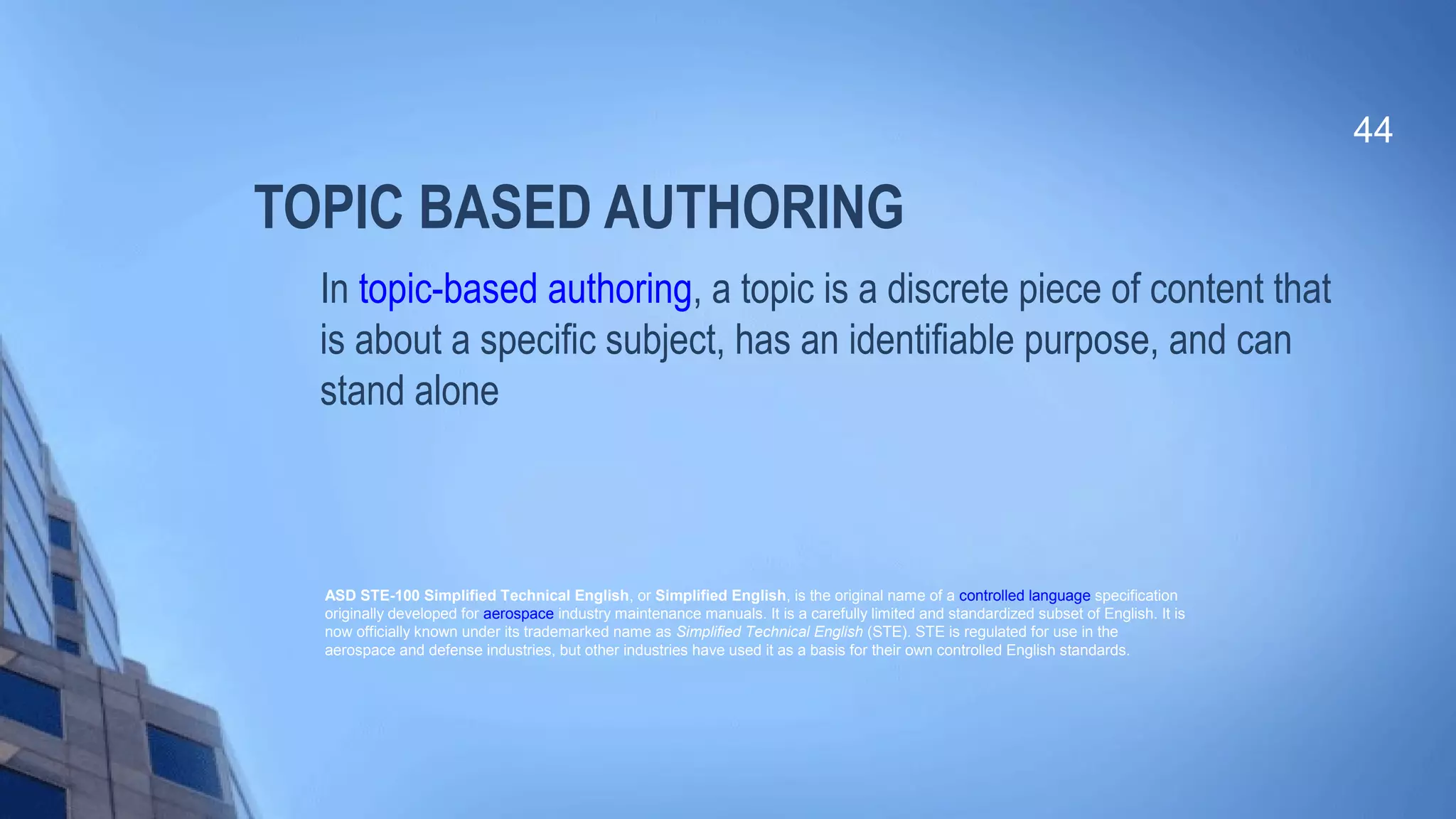
![TOPICS AND XML
In technical communication, topic-based authoring is a modular approach to content creation where
content is structured around topics that can be mixed and reused in different contexts. It is defined in
contrast with book-oriented or narrative content, written in the linear structure of written books.[1]
This authoring approach is popular in the technical publications and documentation arenas, as it is
adequate for technical documentation. Tools supporting this approach typically store content
in XML document format in a way that facilitates content reuse, content management, and makes the
dynamic assembly of personalized information possible.
A topic is a discrete piece of content that is about a specific subject, has an identifiable purpose, and can
stand alone (does not need to be presented in context for the end-user to make sense of the content).
Topics are also reusable. They can, when constructed properly (without reliance on other content for its
meaning), be reused in any context anywhere needed.
The Darwin Information Typing Architecture (DITA) is a standard designed to help authors create topic-
based content. The standard is managed by the Organization for the Advancement of Structured
Information Standards (OASIS) DITA Technical Committee.
45](https://image.slidesharecdn.com/dita-171102193917/75/DITA-Single-source-Multi-channel-Publishing-45-2048.jpg)
![TOPIC-ORIENTED AUTHORING
DITA content is created as topics, each an individual XML file.
Typically, each topic covers a specific subject with a singular intent,
for example, a conceptual topic that provides an overview, or a
procedural topic that explains how to accomplish a task.[8]
Content should be structured to resemble the file structure in which it
is contained.
46](https://image.slidesharecdn.com/dita-171102193917/75/DITA-Single-source-Multi-channel-Publishing-46-2048.jpg)
![CONTENT REUSE
Topics can be reused across multiple publications. Fragments of
content within topics can be reused through the use of content
references (conref or conkeyref), a transclusion mechanism.[4]
47](https://image.slidesharecdn.com/dita-171102193917/75/DITA-Single-source-Multi-channel-Publishing-47-2048.jpg)
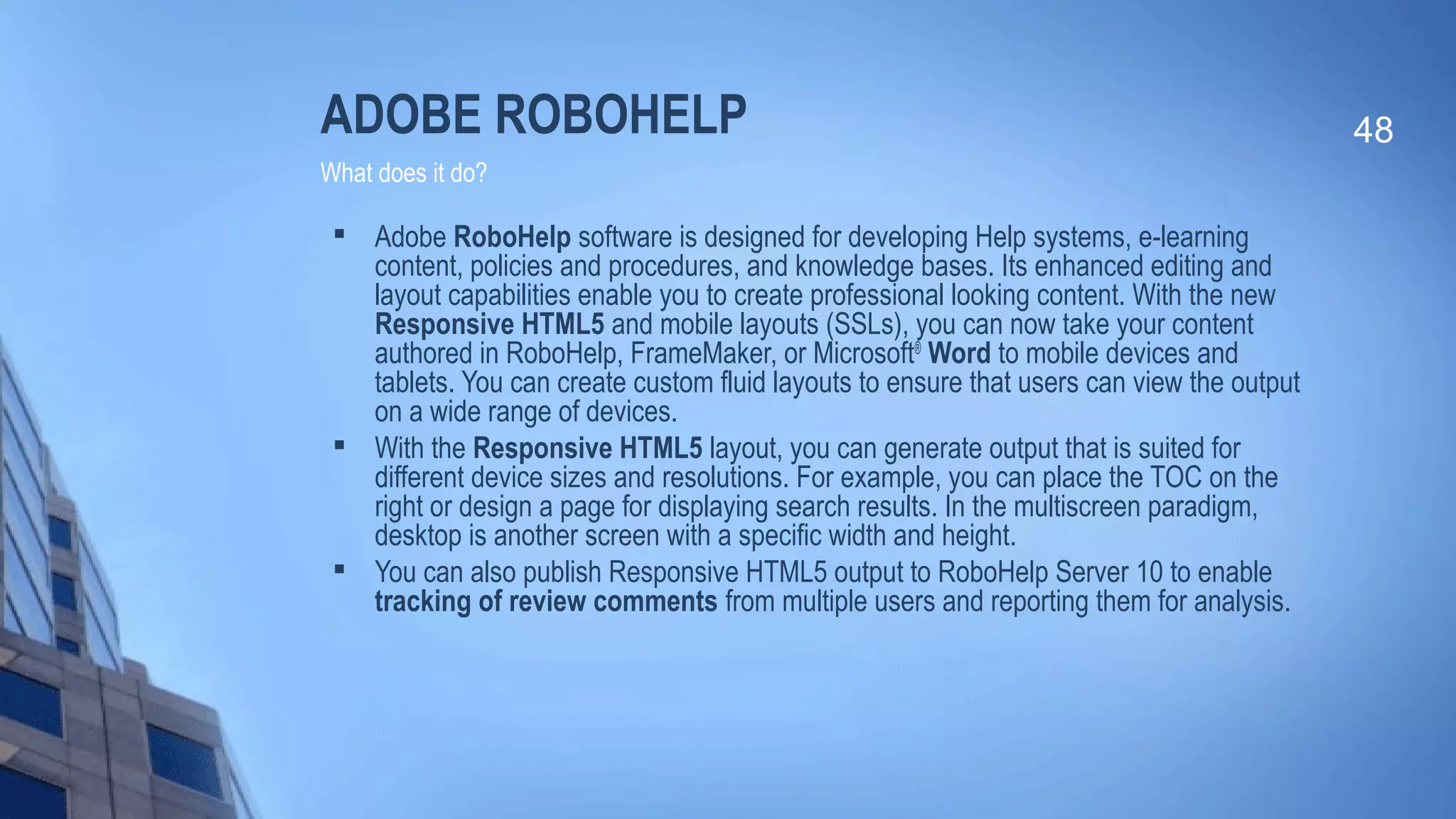
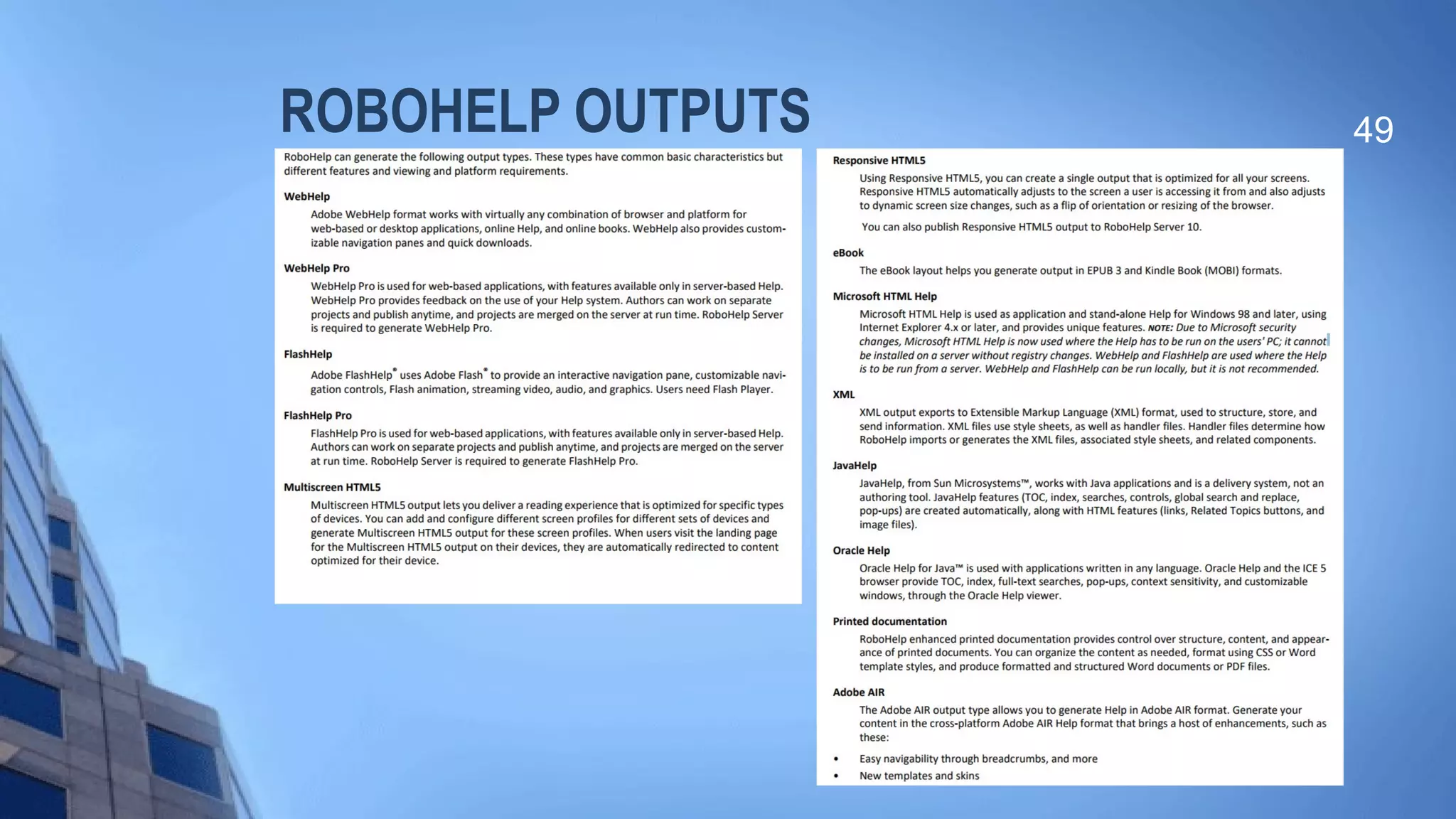
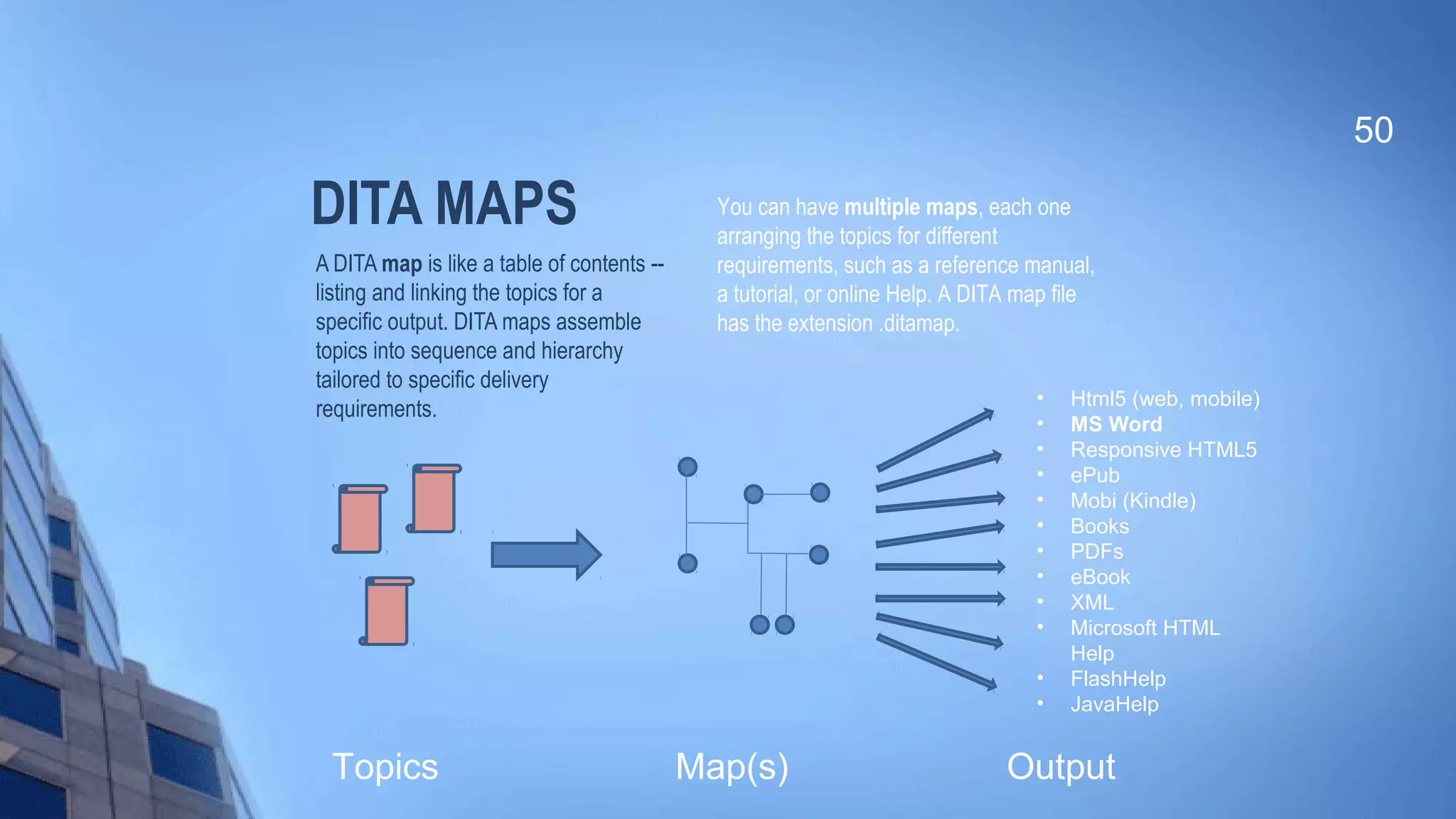
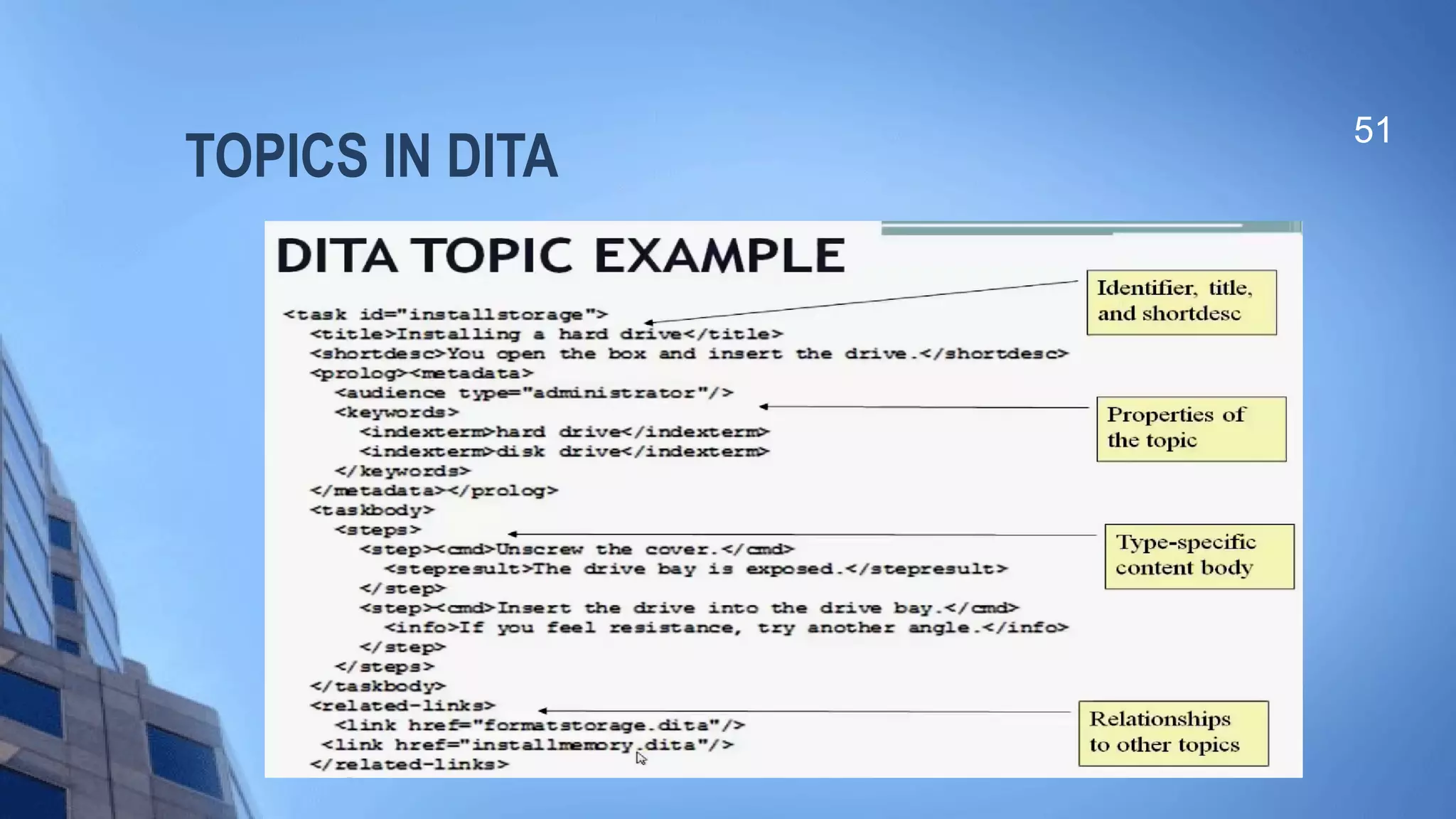
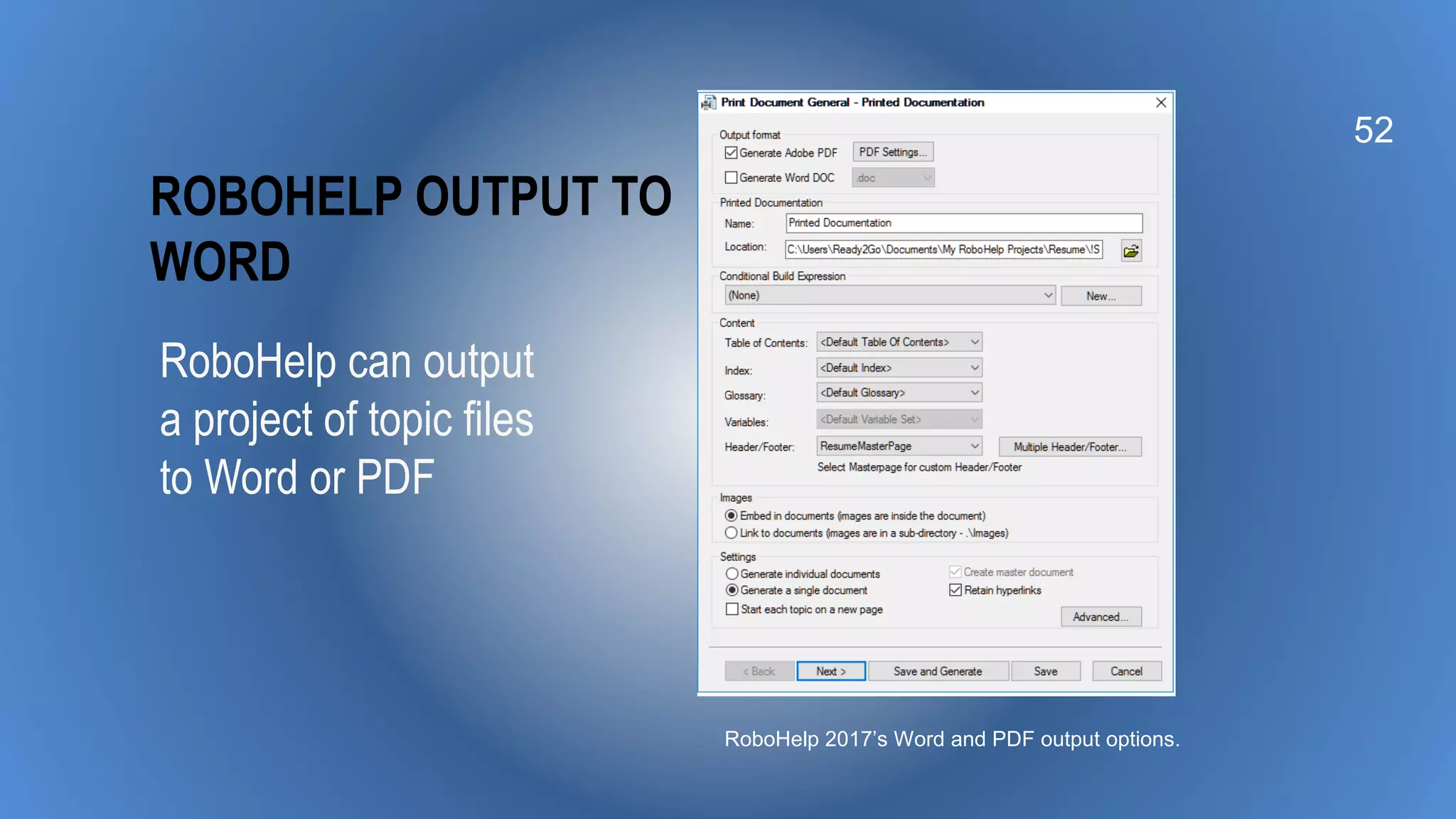
![DITA MAPS
A DITA map is a container for topics used to transform a collection of
content into a publication. It gives the topics' sequence and structure.
A map can include relationship tables (reltables) that define
hyperlinks between topics.[5]
Maps can be nested. Maps can
reference topics or other maps, and can contain a variety of content
types and metadata.
53](https://image.slidesharecdn.com/dita-171102193917/75/DITA-Single-source-Multi-channel-Publishing-53-2048.jpg)
![METADATA
DITA includes extensive metadata elements and attributes, both at
topic level and within elements.[6]
Conditional text allows filtering or styling content based on attributes
for audience, platform, product, and other properties. The conditional
processing profile (.ditaval file) is used to identify which values are to
be used for conditional processing.[7]
Conditional text lets you generate subsets of the content within a
project for various purposes or audiences. You can create conditional
build tags to exclude content from output, and then assign those tags
to topics or elements within topics.
54](https://image.slidesharecdn.com/dita-171102193917/75/DITA-Single-source-Multi-channel-Publishing-54-2048.jpg)

